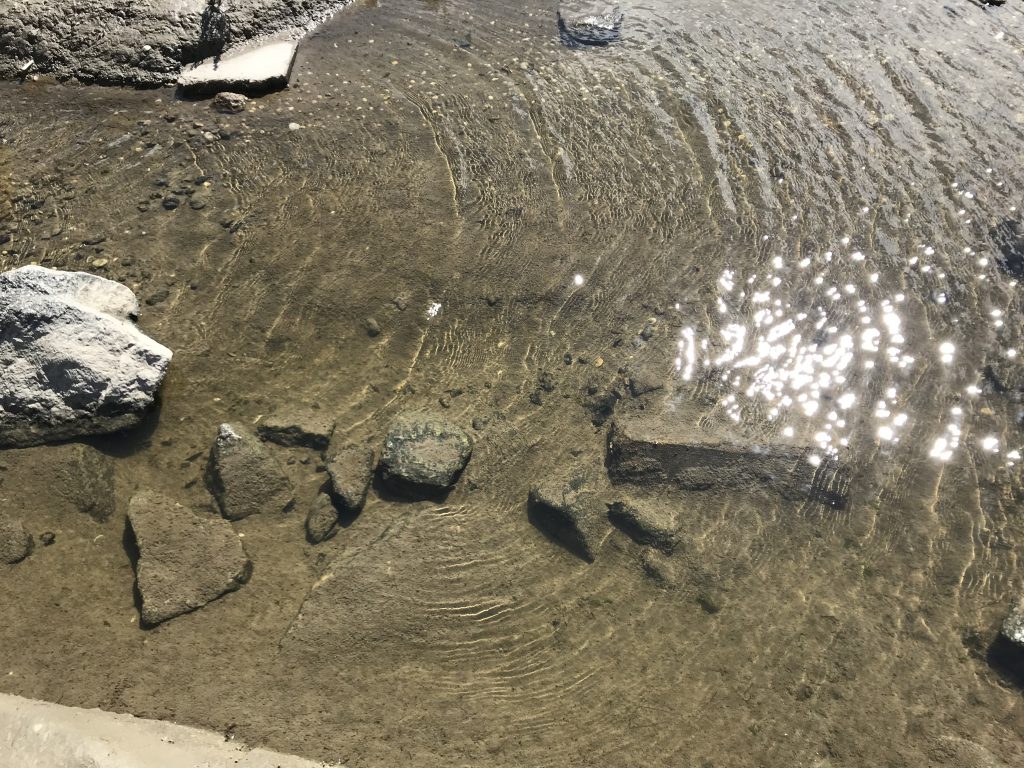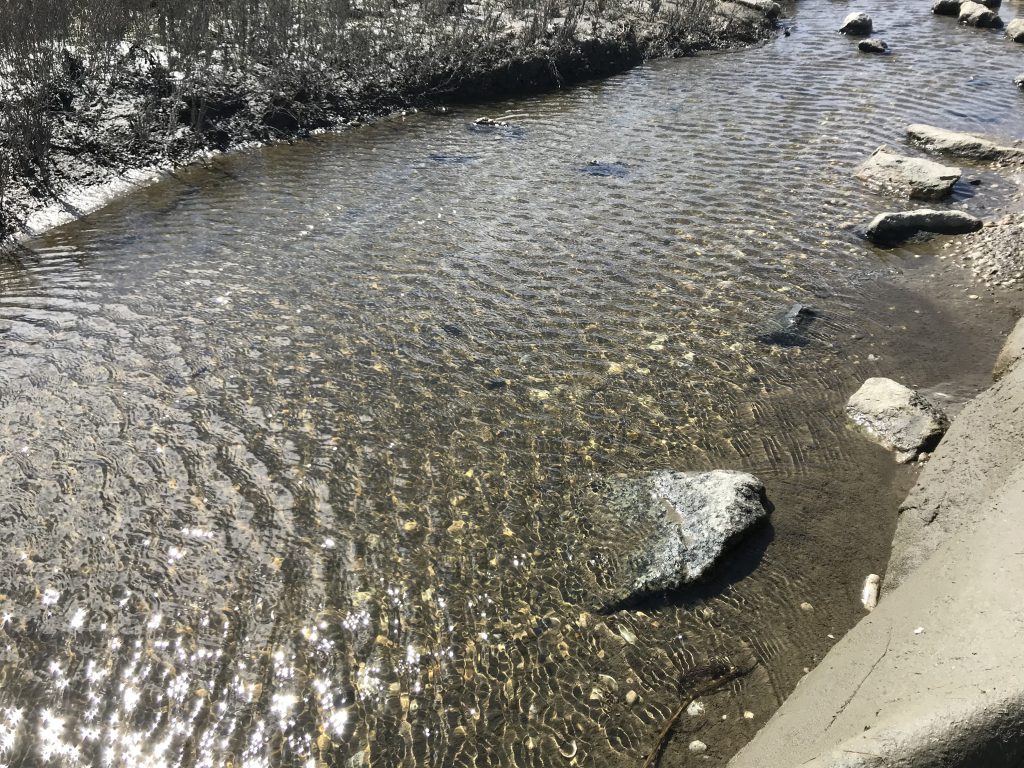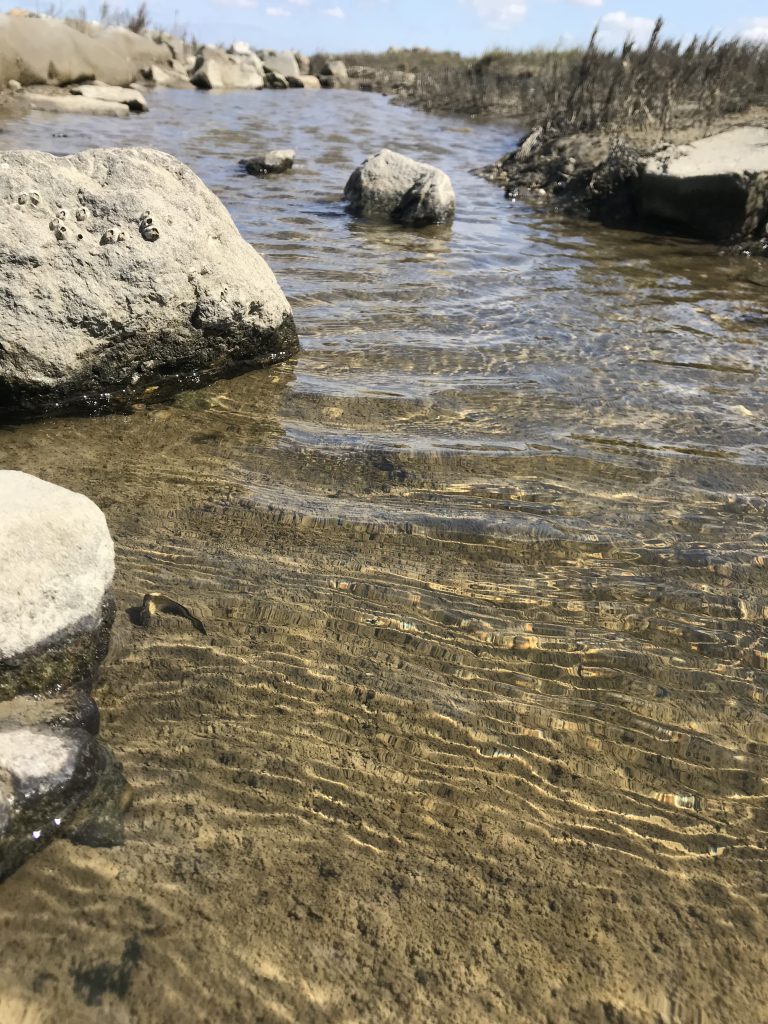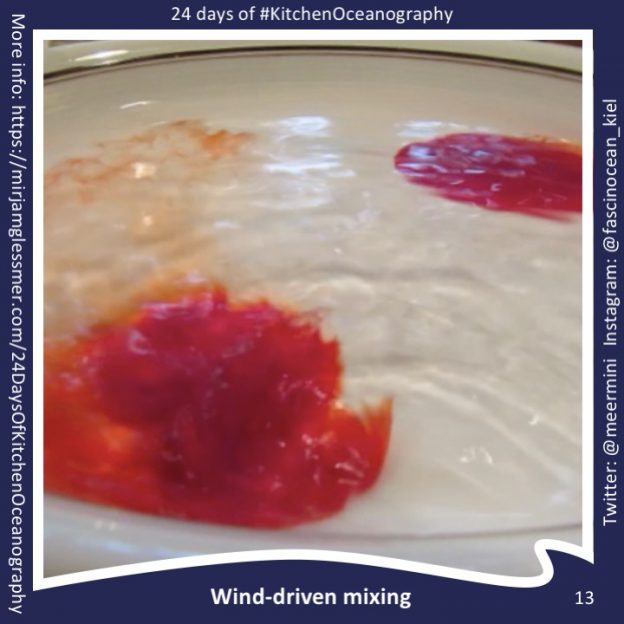
Tag Archives: wind-driven waves

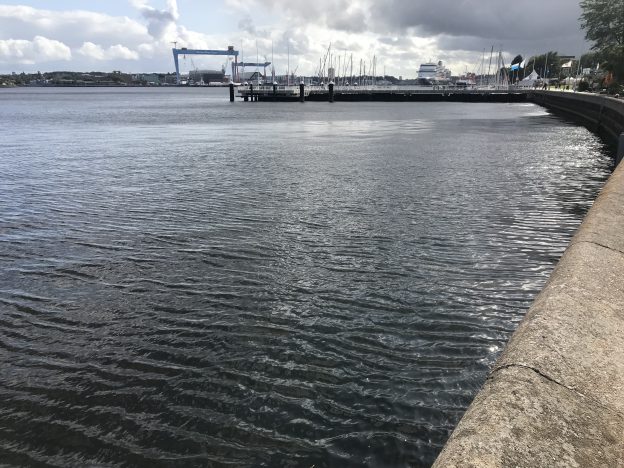
Strong gusts of wind -> lots of energy transferred to the water -> wind waves with large amplitudes
We are still in the “interesting weather” period here in Kiel. Feels more like April than like September, but I am not complaining. I love the rapid change between dark clouds and blue skies and sunshine! Also I like how much more interesting wave pattern get if the wind comes in gusts rather than blowing just consistently the same.
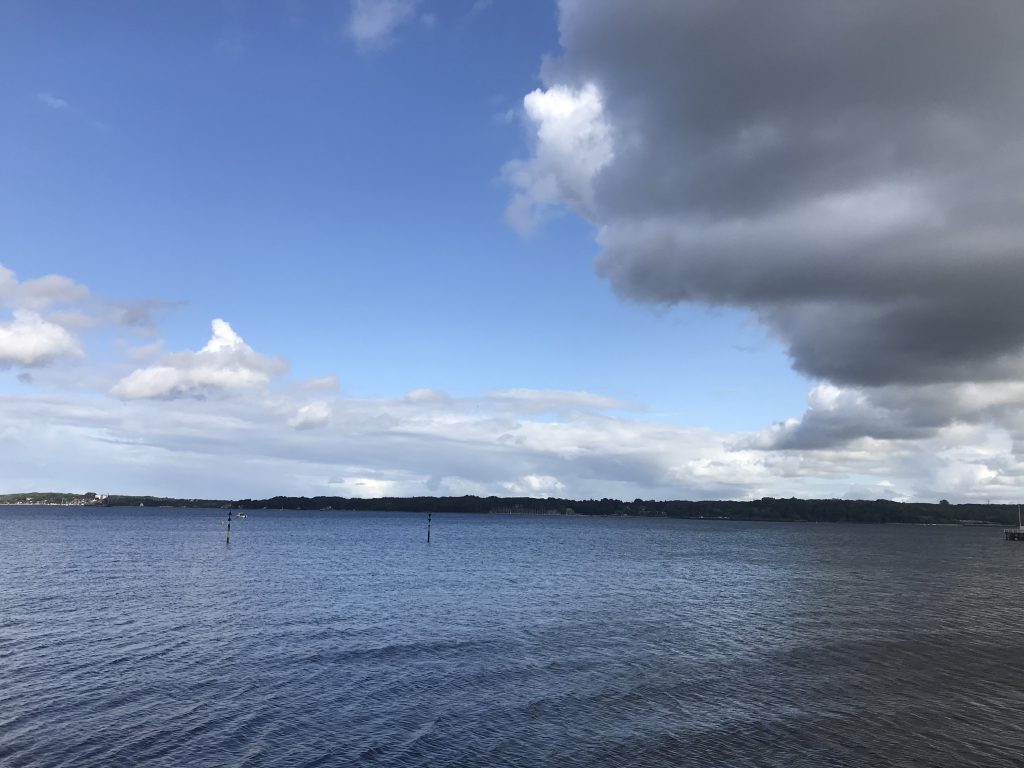
Below, you see strong gusts of wind in the dark areas with the high surface roughness, but you also see that the small waves in the foreground have higher amplitudes and more pointy peaks than we usually see. Additionally, there are longer wave length waves coming in with crests more or less parallel to the images lower edge. And on top of all of this, there is the seagull’s wake. Can you still spot it even though it’s superposed on all the other waves?
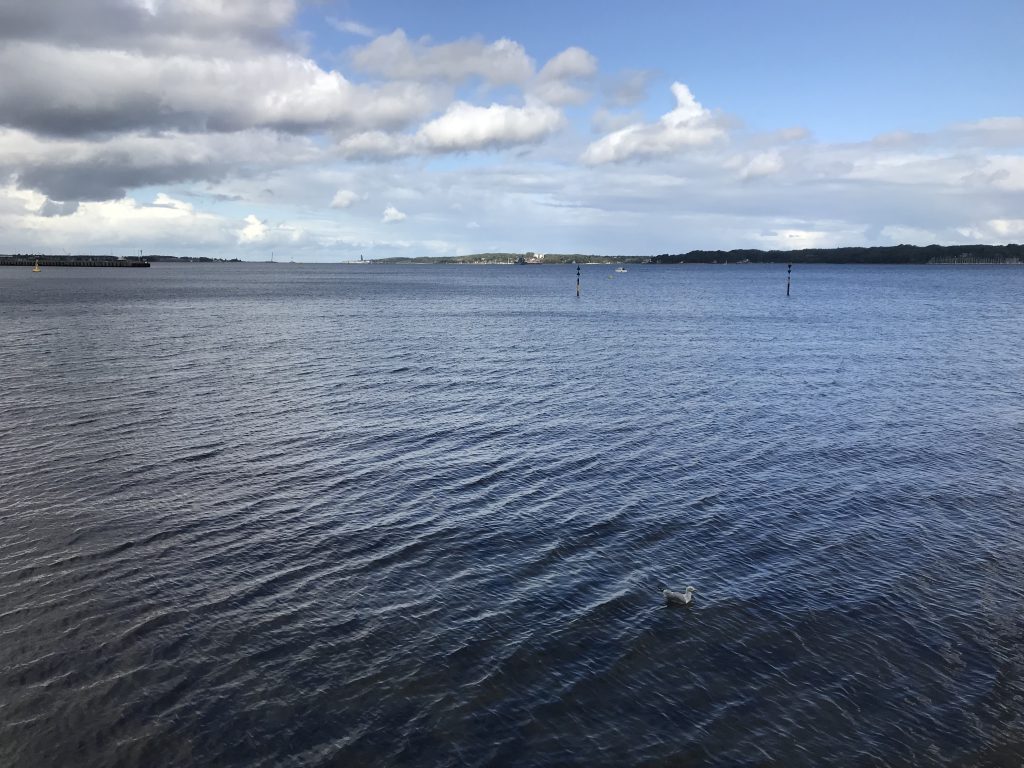
Below, you clearly see the different wind strength in different areas. The shiny, flat surface with lower wind speeds, the rougher areas, and the comparatively short waves with large amplitudes in the foreground that show that there really is a lot of energy input over a relatively short fetch.
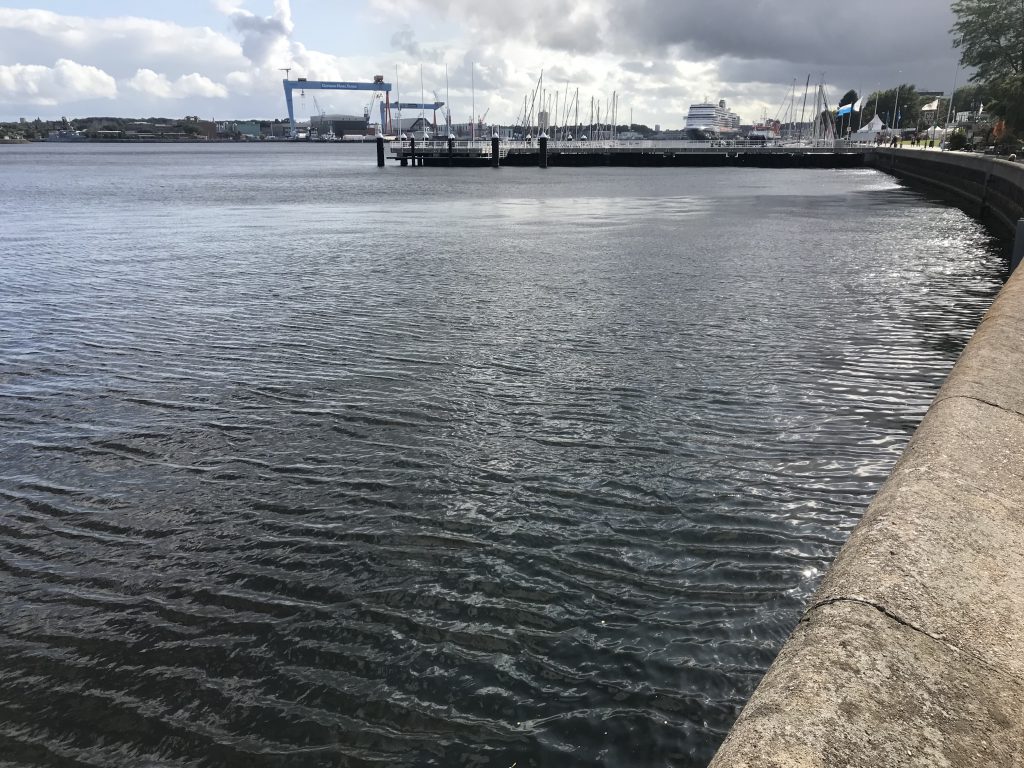
Below, in some regions we can also see hints of a checkerboard interference pattern of longer waves that were reflected at the sea wall, with the small, short wavelength waves superimposed.
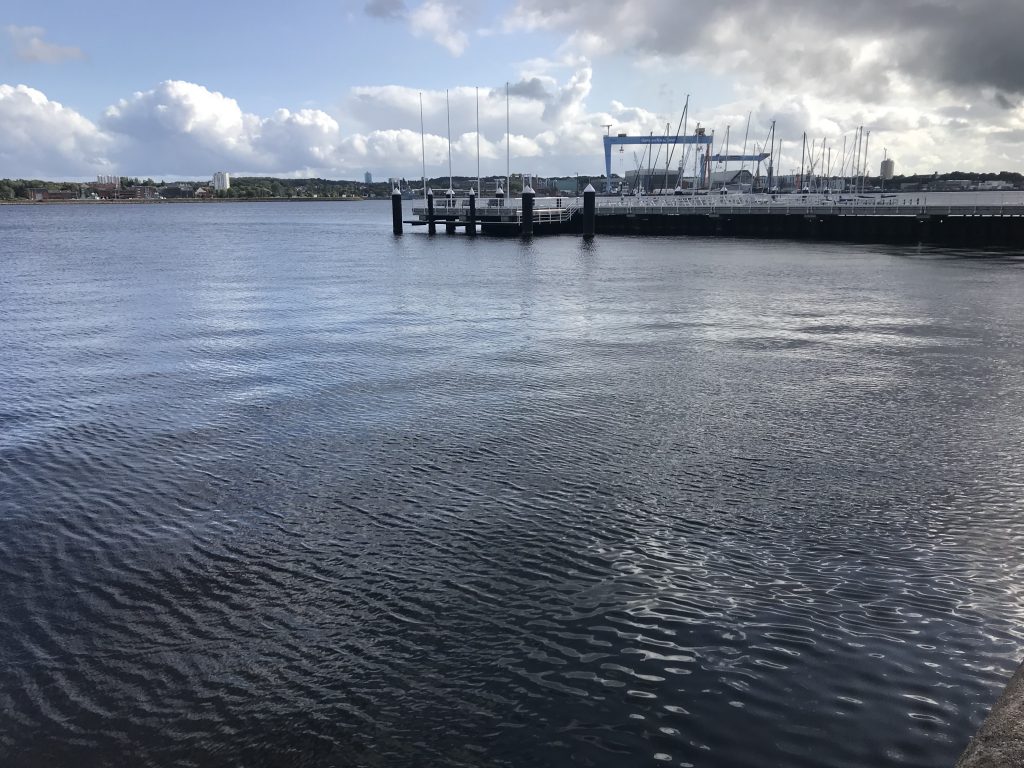
Here is another look at these waves. I find them so fascinating!
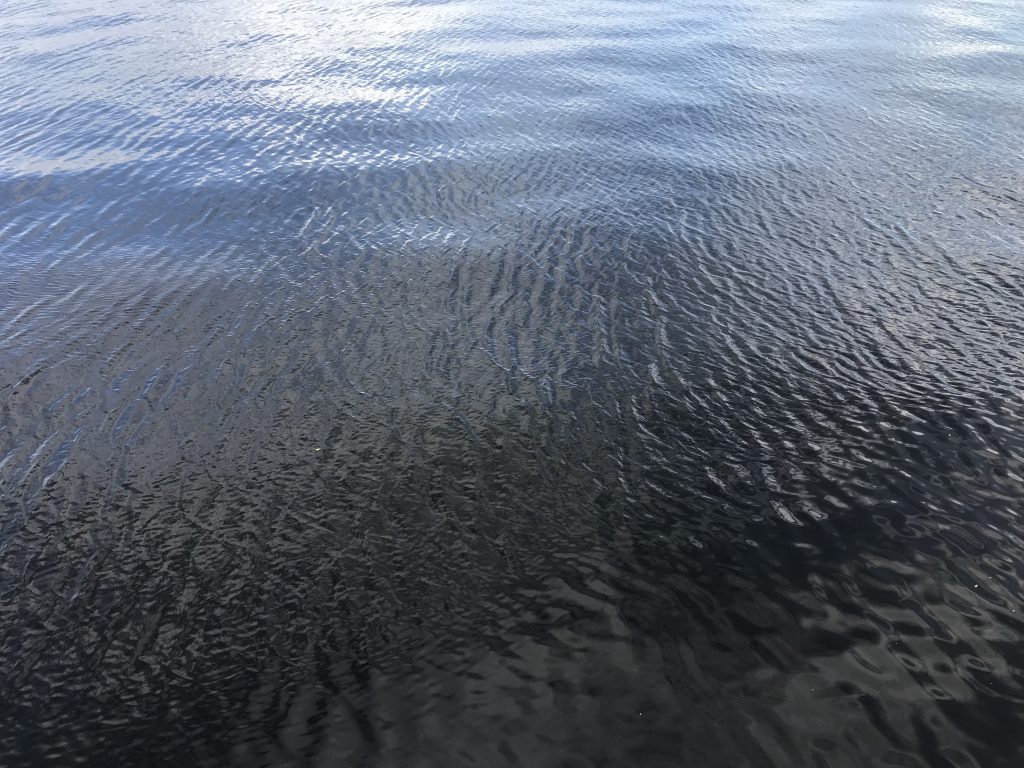
And below is another strong gust of wind visible. And do you see the wave crests parallel to the edge of the floating part of the pier, created by that part of the pier moving in the waves?
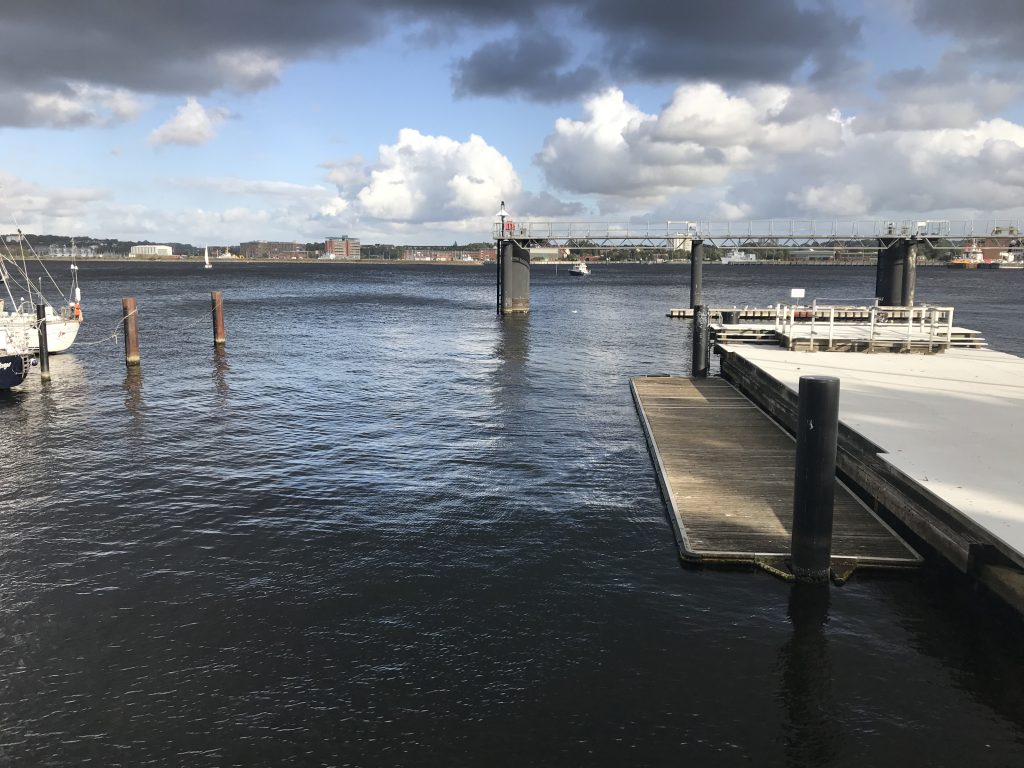
And, just in case you didn’t know: At the end of the rainbow, you will find a … research ship!
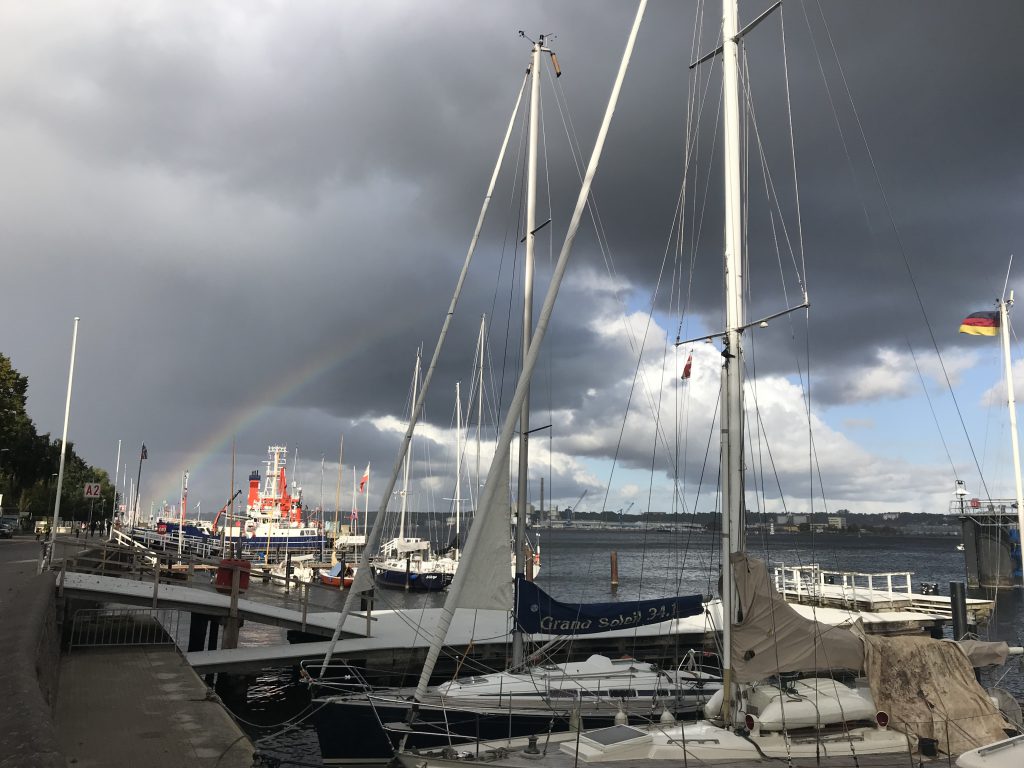
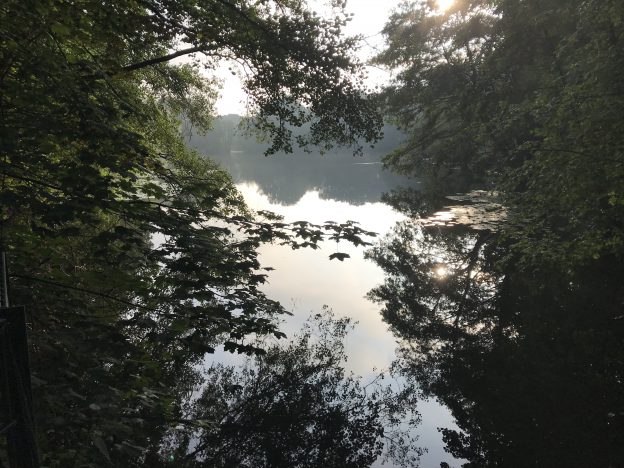
From wind-driven capillary waves to gravity waves on a calm lake
The picture above I thought was too pretty to not put on my blog (because my blog’s main function to me is still my personal brain dump), but the picture below is actually interesting from a physics point of view.
In the middle of the lake, the surface looks a lot rougher and crumpled than the water surrounding it. That’s because there the light breeze is generating small capillary waves, whose restoring force is surface tension. But if we look closely towards the lower edge of the “crumpled” area, we see that the water isn’t as calm and the surface isn’t as flat as they appeared to be on first glance — there are longer waves propagating out of the crumpled area. Those waves are gravity waves, and they can propagate for longer distances without having constant new energy input by the wind.
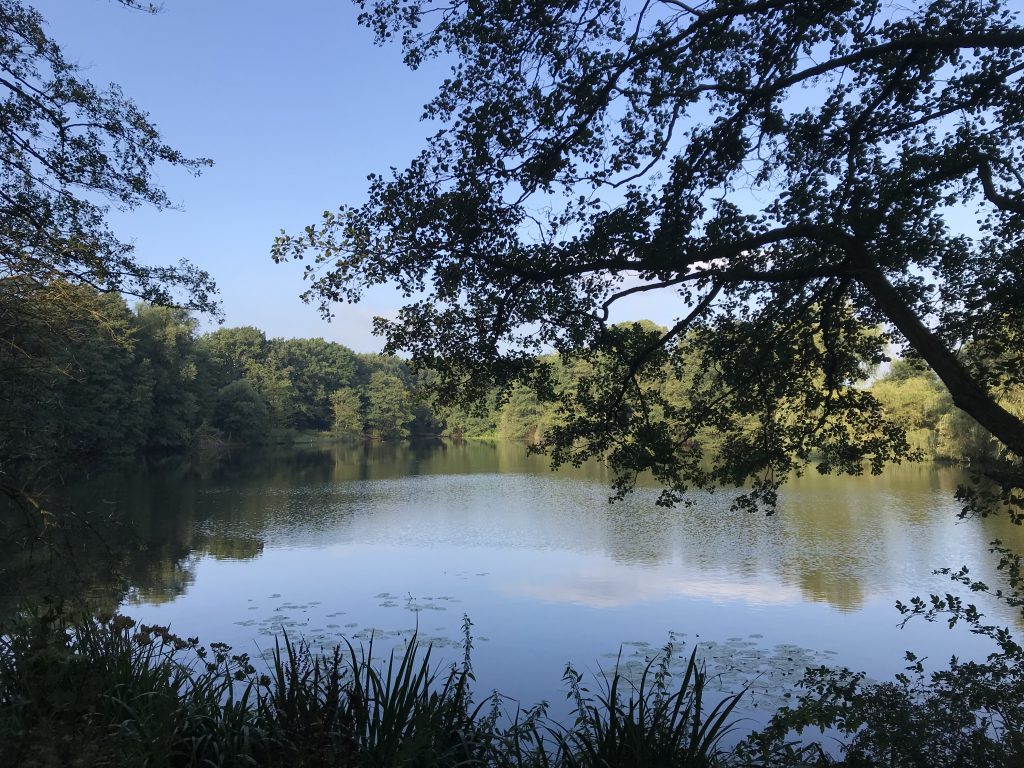
But why doesn’t the crumpled area that is directly influenced by the wind extend all the way to the shore? Of course, on one side of the lake it would be sheltered from the wind by the trees and other things growing there. But on the other side, it’s in a way sheltered by the trees, too, even though the mechanism there is different. There, we don’t have wind until the very edge of the lake, because the current of air is deflected upwards by the trees, so an area of low velocity is formed, kind of like the area surrounding a stagnation point in an idealized model.
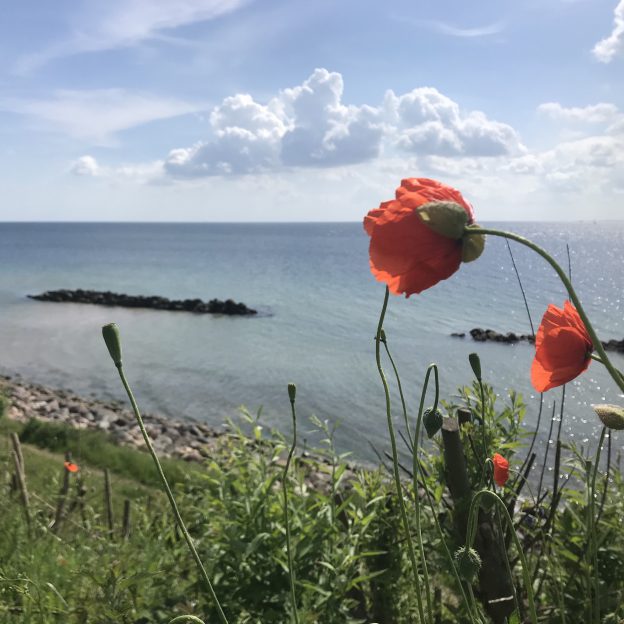
Wave watching in Kleinwaabs — and my first real Insta story!
So today (and tomorrow and the day after) is the big event that I have been working towards all year in my not-so-new-anymore job: The GEO-Tag der Natur! If you are curious about what’s going on there, check out our Instagram account @geo.tag.der.natur that Kati is doing an amazing job with!
As you can imagine, the weeks running up to this weekend were quite busy and a little stressful, too. So last Sunday I went to the beach to hang out with friends and do some wave watching! Because nothing has a more calming effect on me than watching water…
For example below we see nicely the effect of the wave (and wind) breakers on the wave field. In the lee of the wave breaker, the water is completely calm, whereas towards the right of the bay waves form and grow larger and larger.
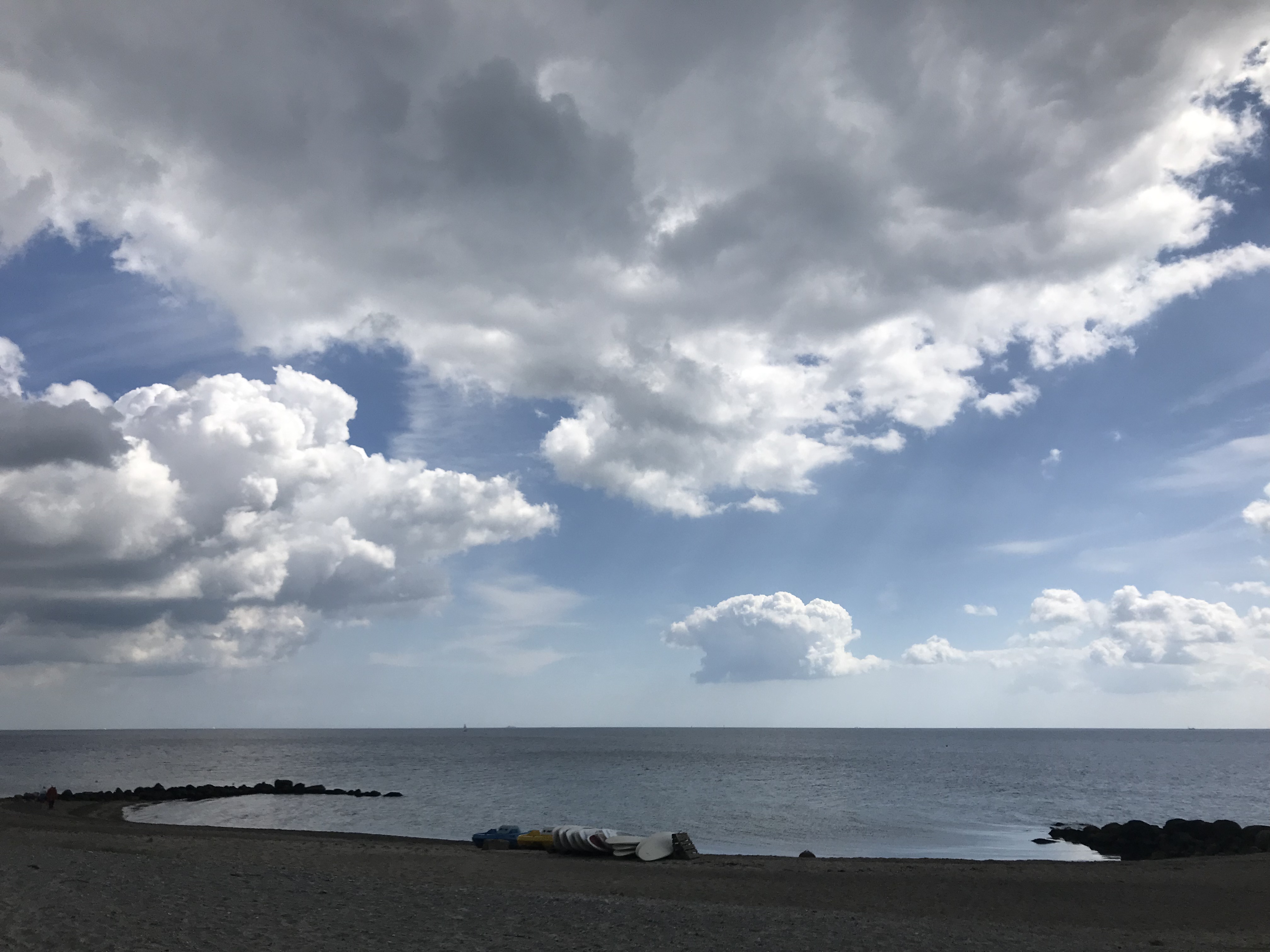
And below we see a pretty cool “diffraction at slit” example: Straight wave fronts reach the slit between two wave breakers, and as they propagate through the slit, they become half circles.
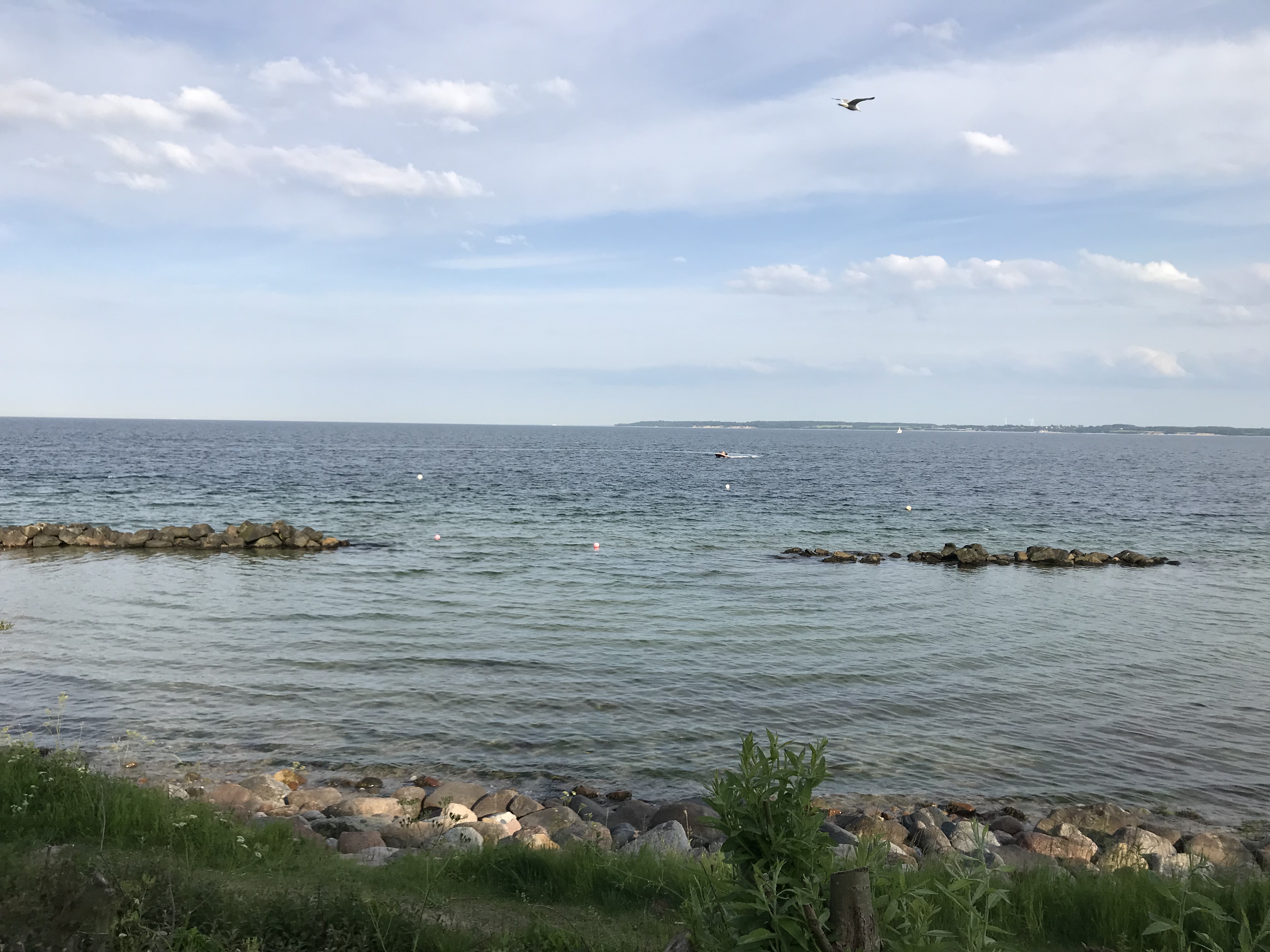
But to relax and get my thoughts away from my job, I tried something new: I created and posted my first ever Instagram story! I’m not quite sure it’s my format, but I definitely had fun! What do you think? Would you like to see more of those? (I only just realized the story is in german and my blog in English. Posting anyway… Would anyone like to see this kind of stuff in English? Then please let me know and I’ll see what I can do…)
(P.S.: Since I made this for Instagram, the format of the video was optimized for viewing on a mobile phone. Therefore it looks crap embedded in a blog. But some you win, some you loose…)
What do you do to relax and get your mind off of work? Wave watching and posting about it on social media? Have you ever tried that? Or what else would you recommend?
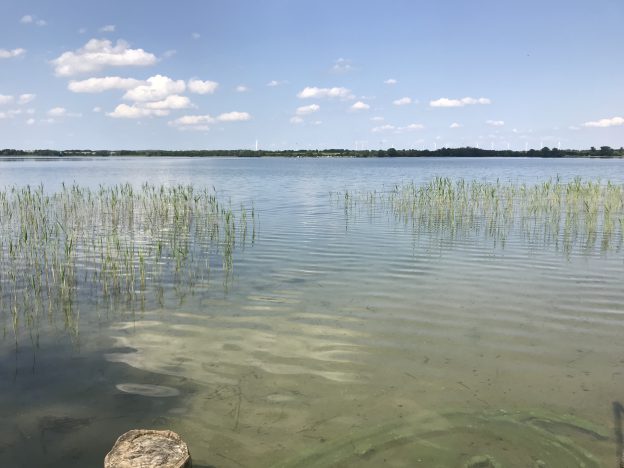
Observing a breeze making waves on Parsteiner See
Yesterday, I happened to be at Parsteiner See for work.
At first, the sea was completely calm and the only waves were the ones we made doing our photo shoots, like so:
Other than that, the lake was completely calm.

But then suddenly, I spotted a breeze going over the lake. It becomes visible in the dark areas with higher surface roughness, where capillary waves have formed.
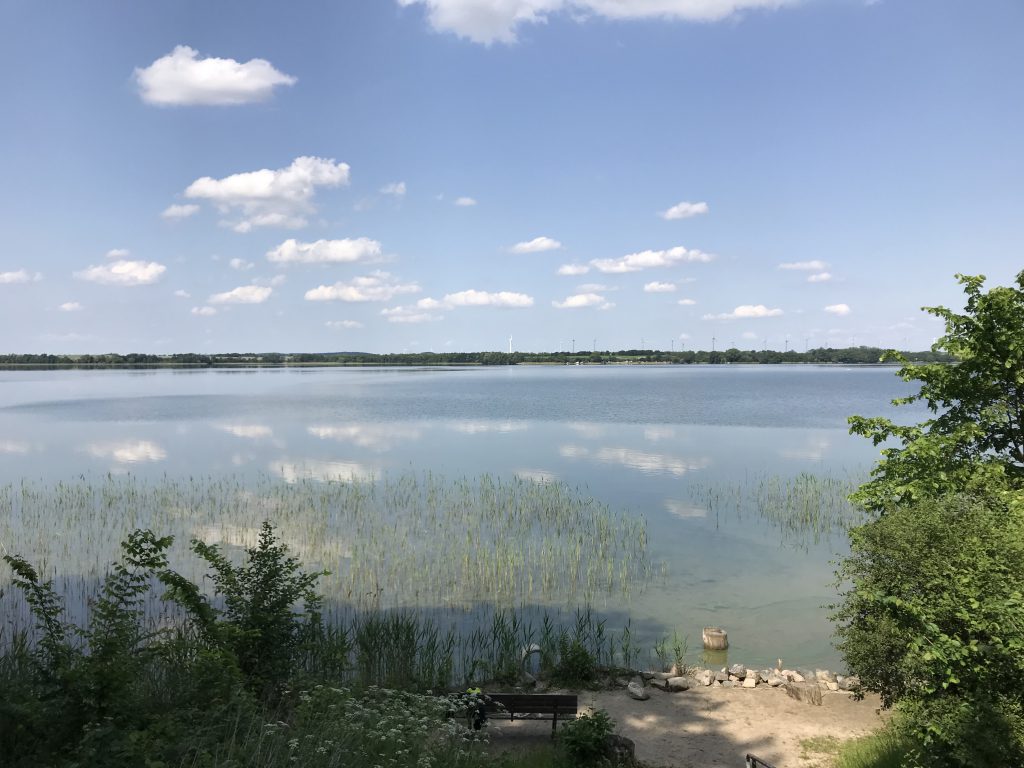
As the wind keeps blowing over the capillary wave area, those waves grow and then at some point become “regular” gravity waves, that travel out of the region where they are directly forced by the wind. See below: In the background you still see the area with higher surface roughness, whereas in the foreground gravity waves are coming towards the shore.

As the wind keeps blowing over the surface, forming capillary waves over larger and larger areas, those areas all show up as darker and rougher.
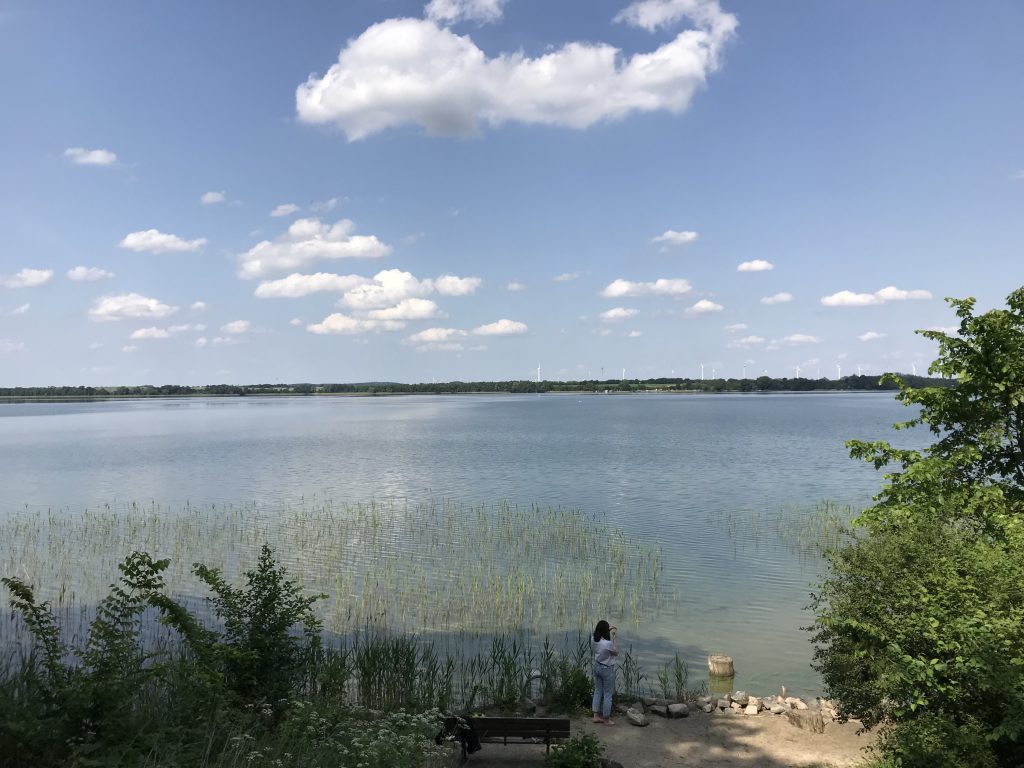
And the cute little waves keep coming to the shore :-)

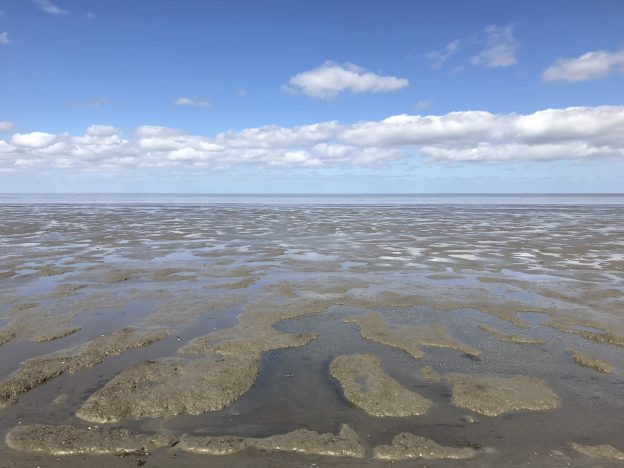
Wind-driven waves in natural flumes for #flumefriday
On a bike tour with my friend Frauke in Greetsiel two or three weeks ago, she pointed out how well one could see that the waves on the puddles left in the Wadden Sea close to low tide were wind-generated. That was that for the bike tour — now I had to take pictures.
Below you nicely see the ripples that are created where there are longer stretches of puddle aligned with the wind direction, i.e. where there is enough fetch. And you see how the waves get diffracted behind topography, fanning out downwind of slits! The wind is coming from the right here, almost in the direction pointed out by the looks-like-an-arrow-but-is-plastic marine litter.
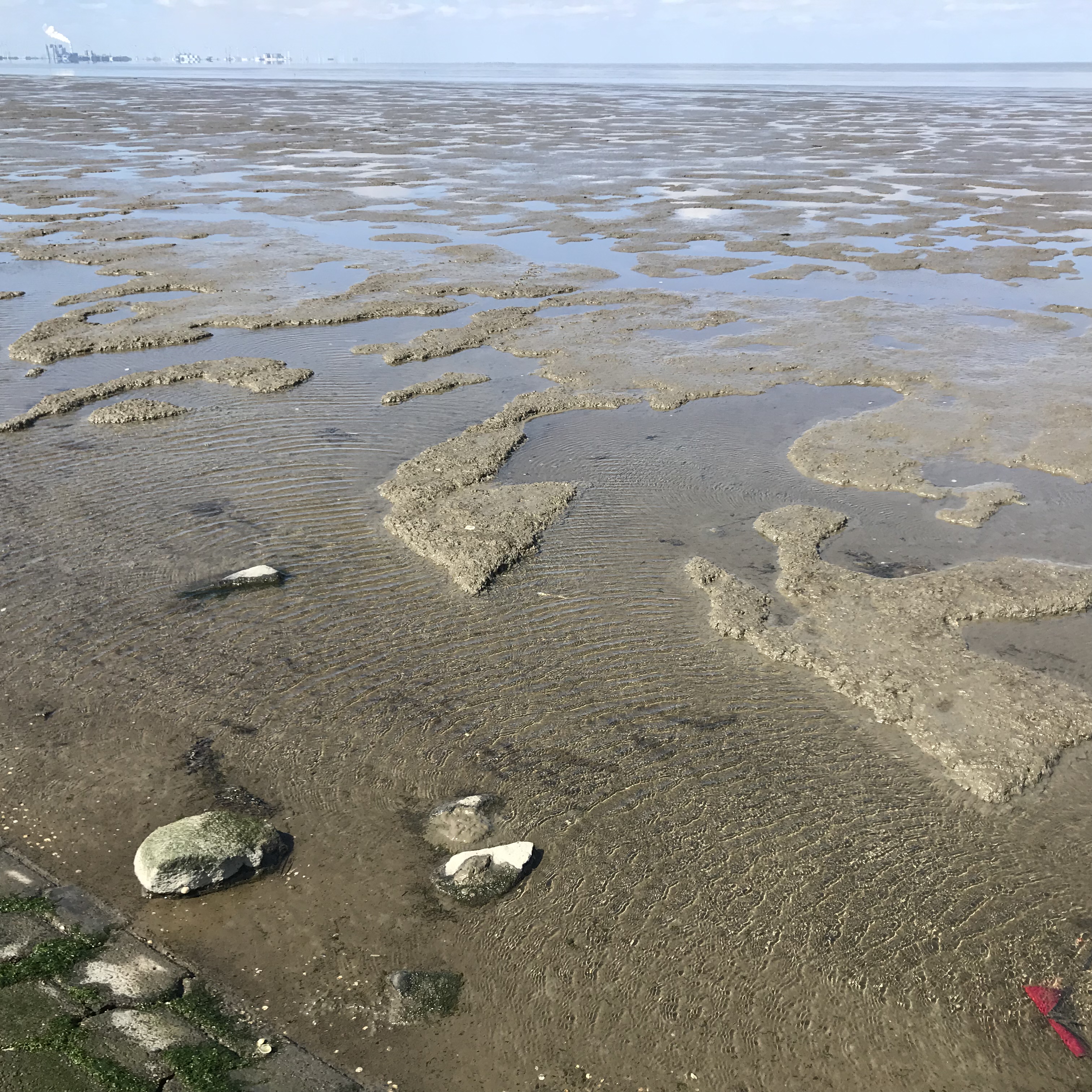
Here we are looking in the opposite direction, the wind now going left-to-right. Do you see the one slit in the lower half of the picture and how wave crests propagate almost perpendicularly to the wind direction, just because there are waves going through that slit? Pretty cool, me thinks!
The really shallow water with all the stones in it made it really easy to look at waves from different directions. Below, we are looking downwind, at the back of the waves.
And below we are looking upwind. See how different things look now? You still see the wind pushing the waves, the front slope of the wave is a lot steeper than the back slope.
I love the picture above, makes me want to put my hand in the water and play with the waves :-)
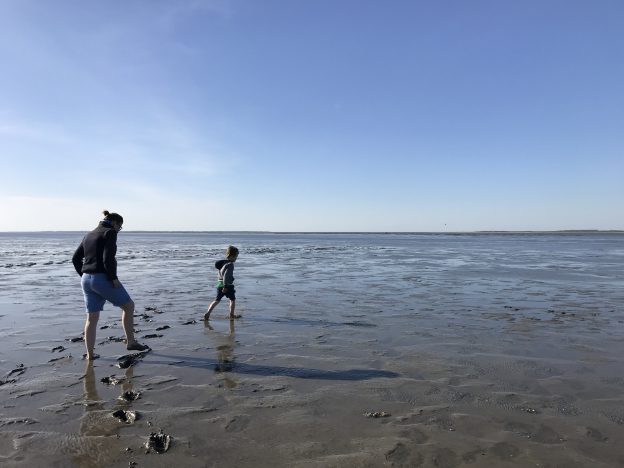
The wonders of a Wadden Sea. Or what someone addicted to #wavewatching thinks they are
As someone living on the German Baltic Sea coast, I don’t spend a lot of time on the North Sea coast (except, actually, my week-long vacation after Easter with my godson and his family, and when my friend Frauke and I went to Sylt earlier this year, or when Frauke and I are going back to the North Sea next weekend. So maybe that’s actually not so little time on the North Sea coast compared to most other people?).
Anyway. I really like the North Sea, especially because I like the flat landscape where the highest points are dykes.
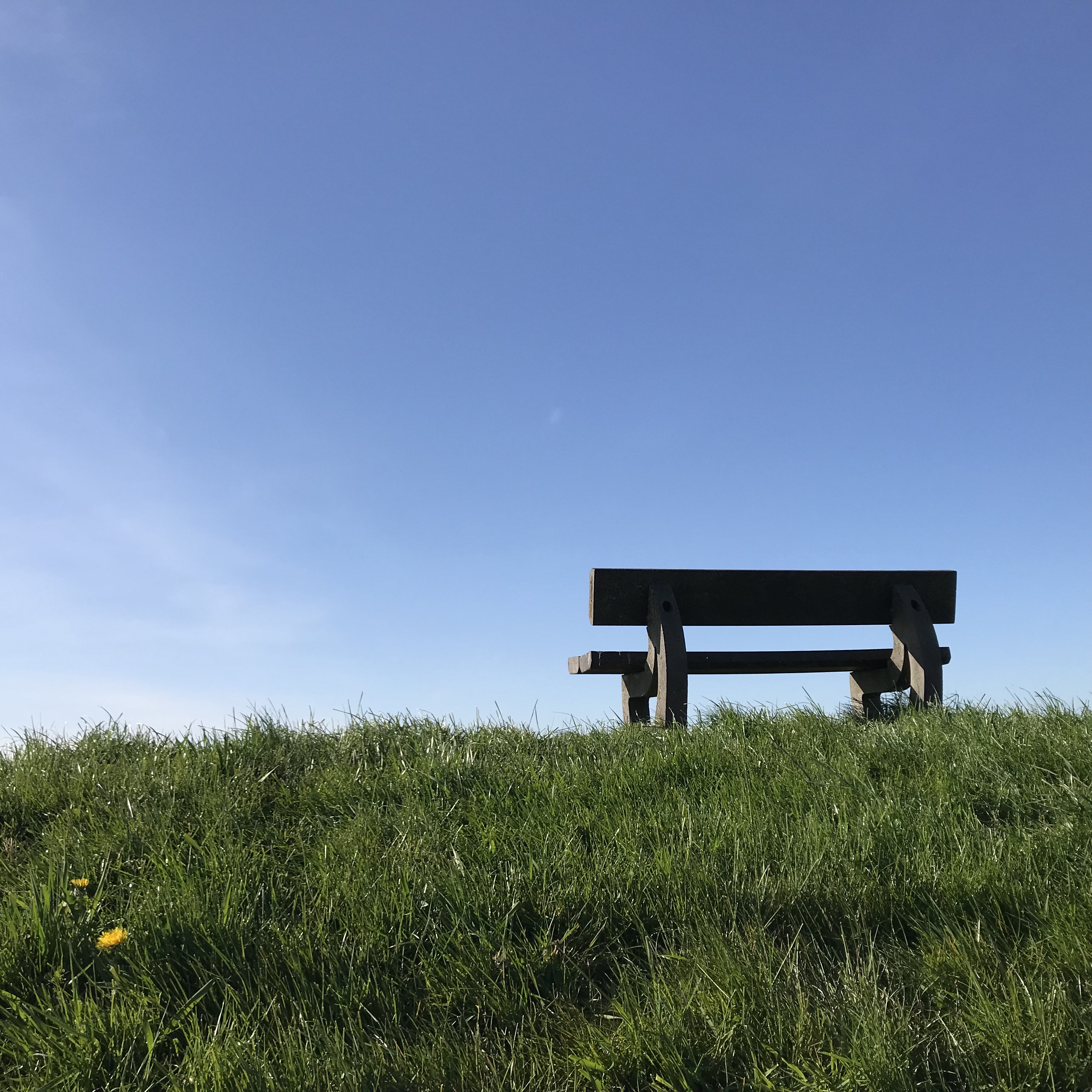
What I really dislike, though, is getting my feet muddy. But that’s pretty much the whole point of a North Sea vacation, according to my godson and his family.
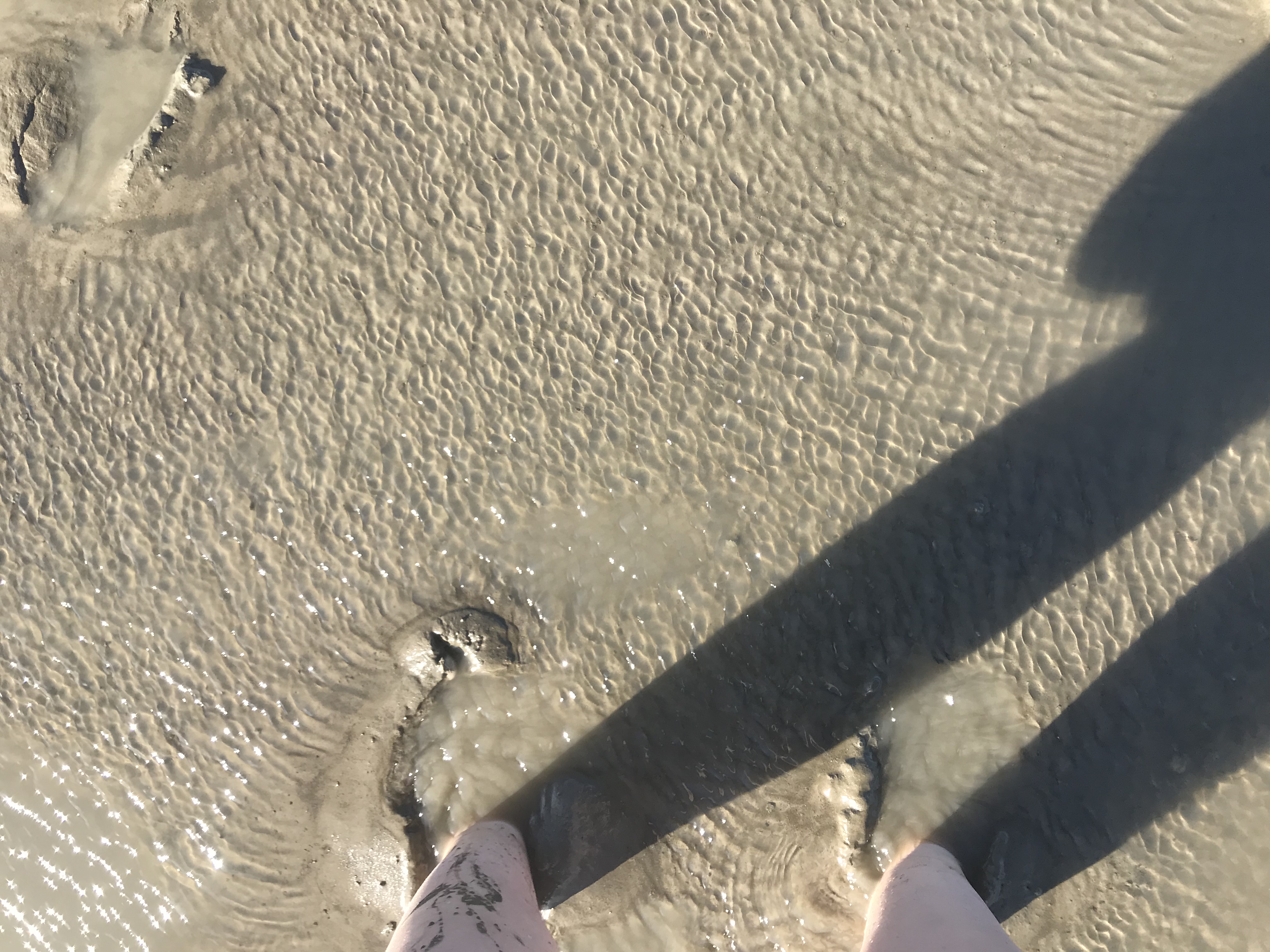
On the other hand, though, having the opportunity to actively and directly influence water depth (or, as normal people would probably say, leaving footprints in the mud) makes for some pretty cool wave watching!
It’s a little hard to see, but if you look at the picture above, you see that the sun is coming from kinda behind my left shoulder, and the picture below is taken from a similar perspective (just telling you so you can interpret the footprints and resulting waves). So the left edges of the footprints are actually coming up and partly out of the water.
The wind is coming from the right, and you see the locally generated wind ripples and how they get defracted around the obstacles created by the foot prints!
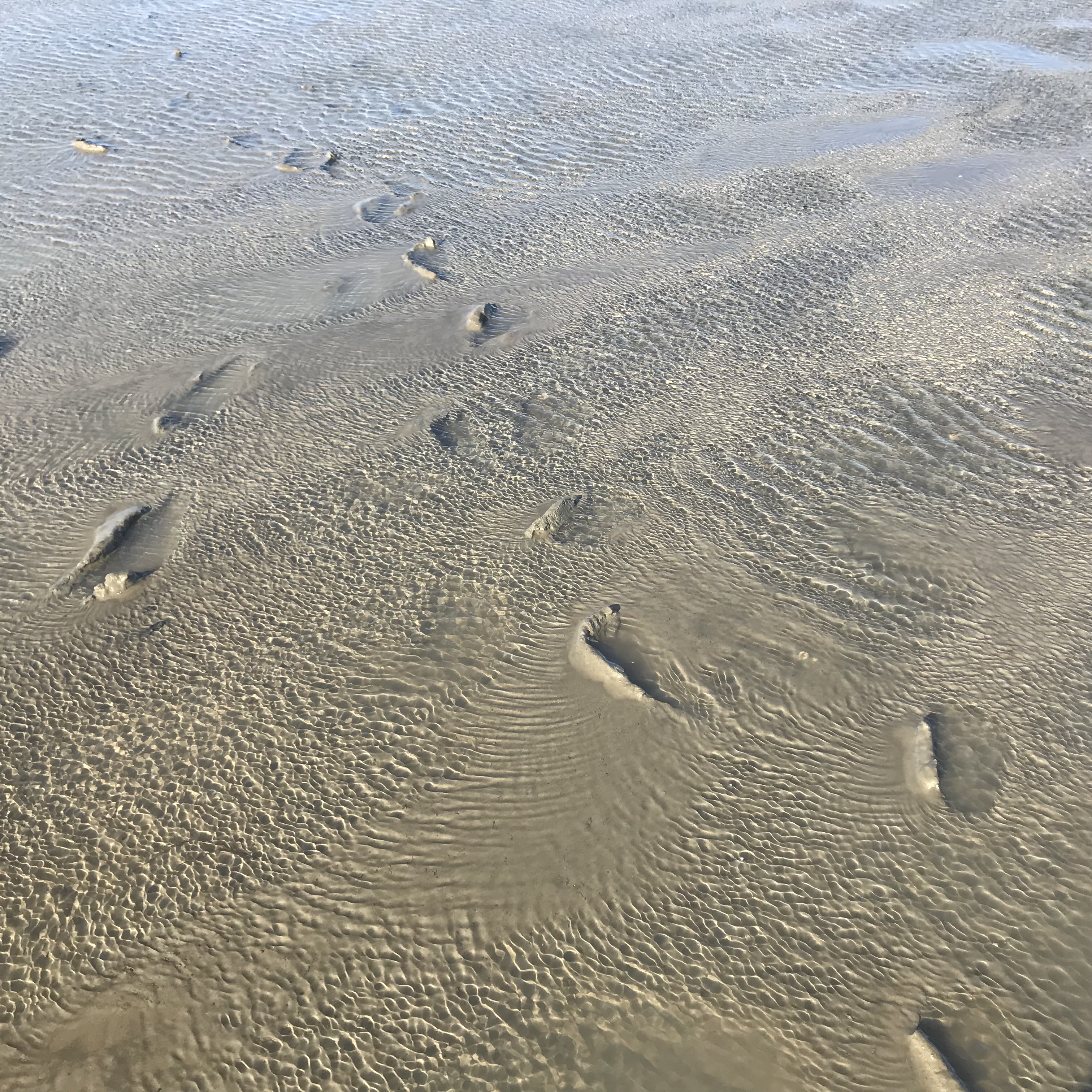
Pretty cool, eh?
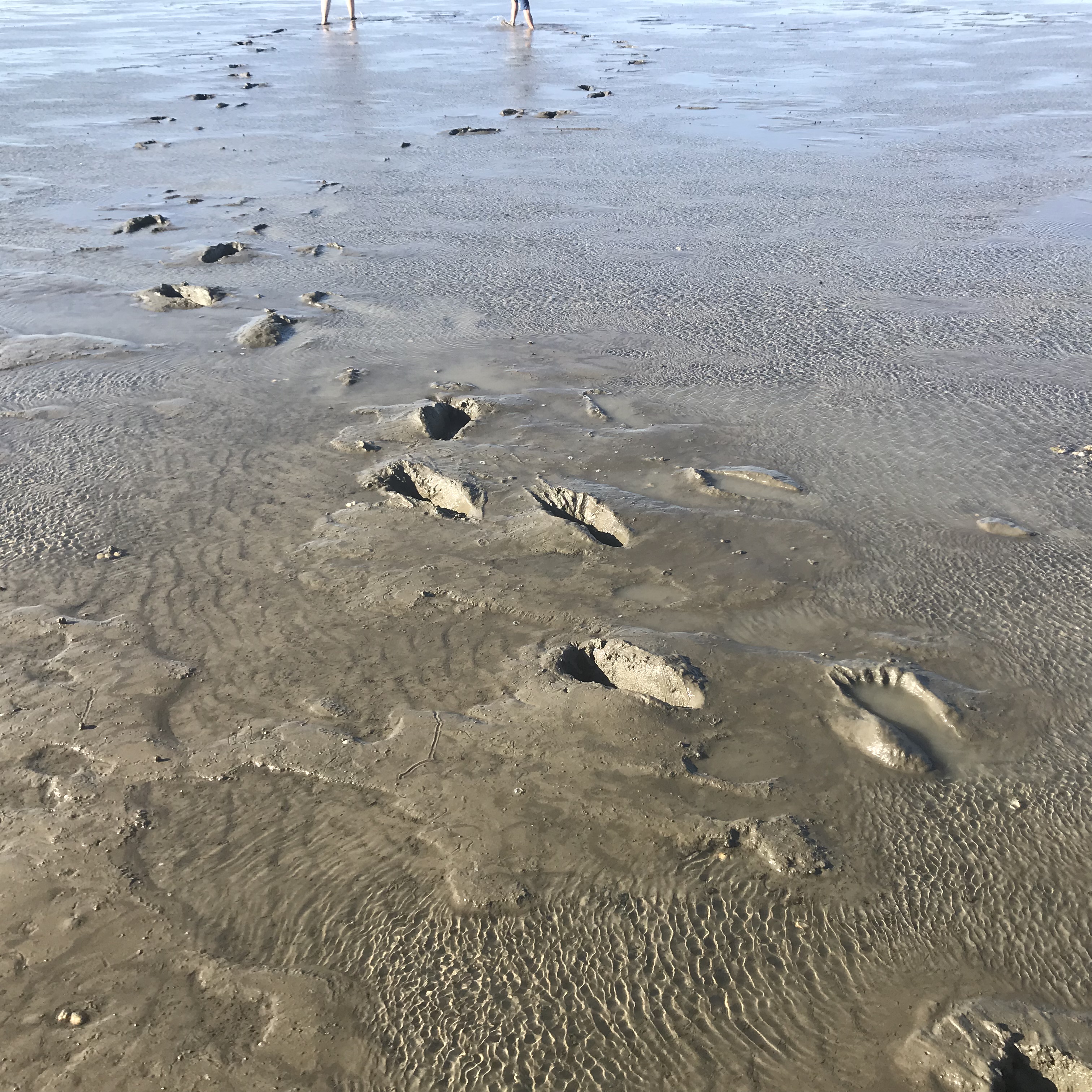
In the picture below, the wind is coming from the left and you see the muddy wakes of the fresh footprints! This I think is pretty awesome, especially because you at the same time see the refraction of waves around the obstacles.
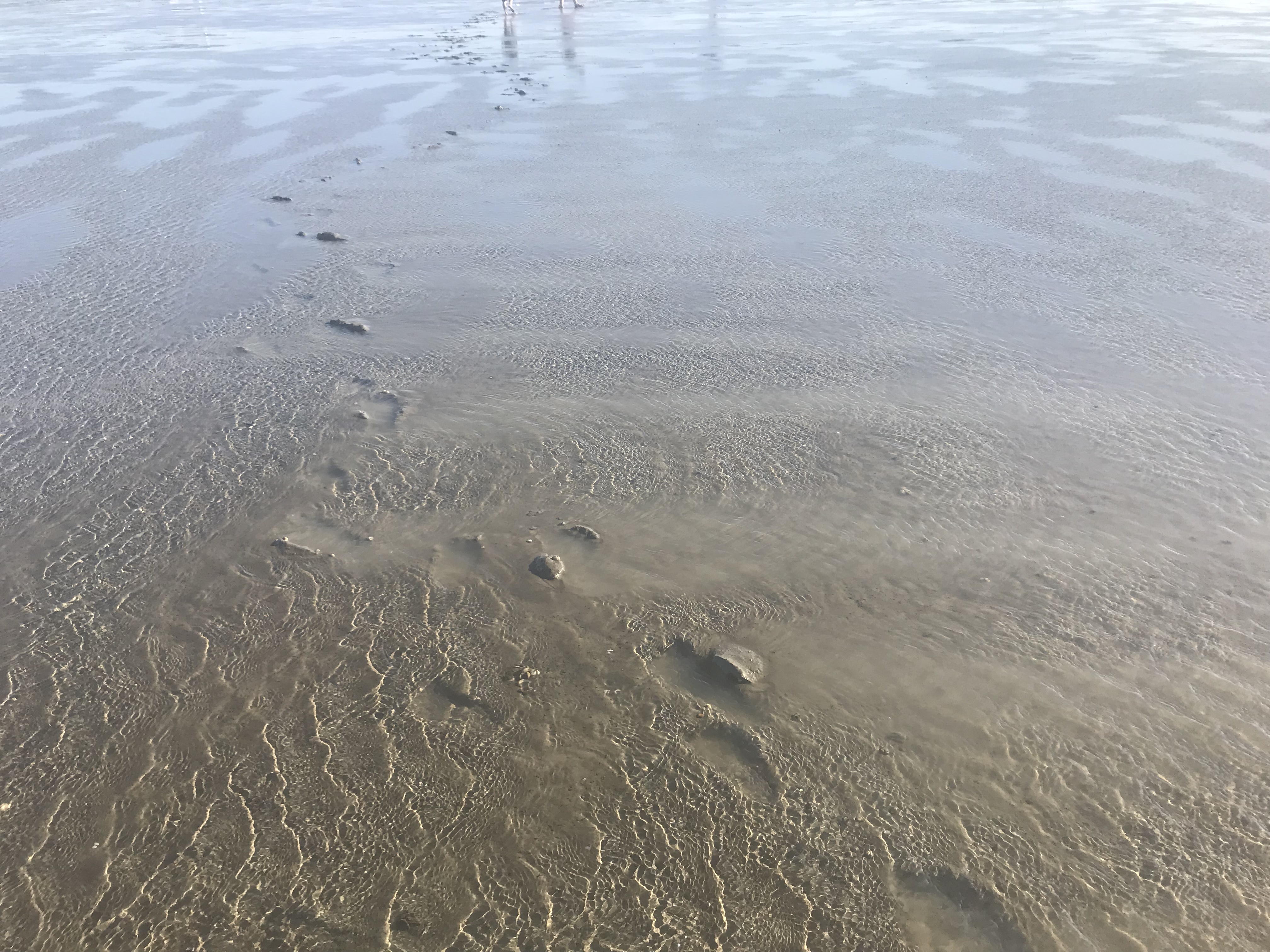
What I also think is pretty cool are the little spaghetti piles of sand that the worms living in the mud leave behind.
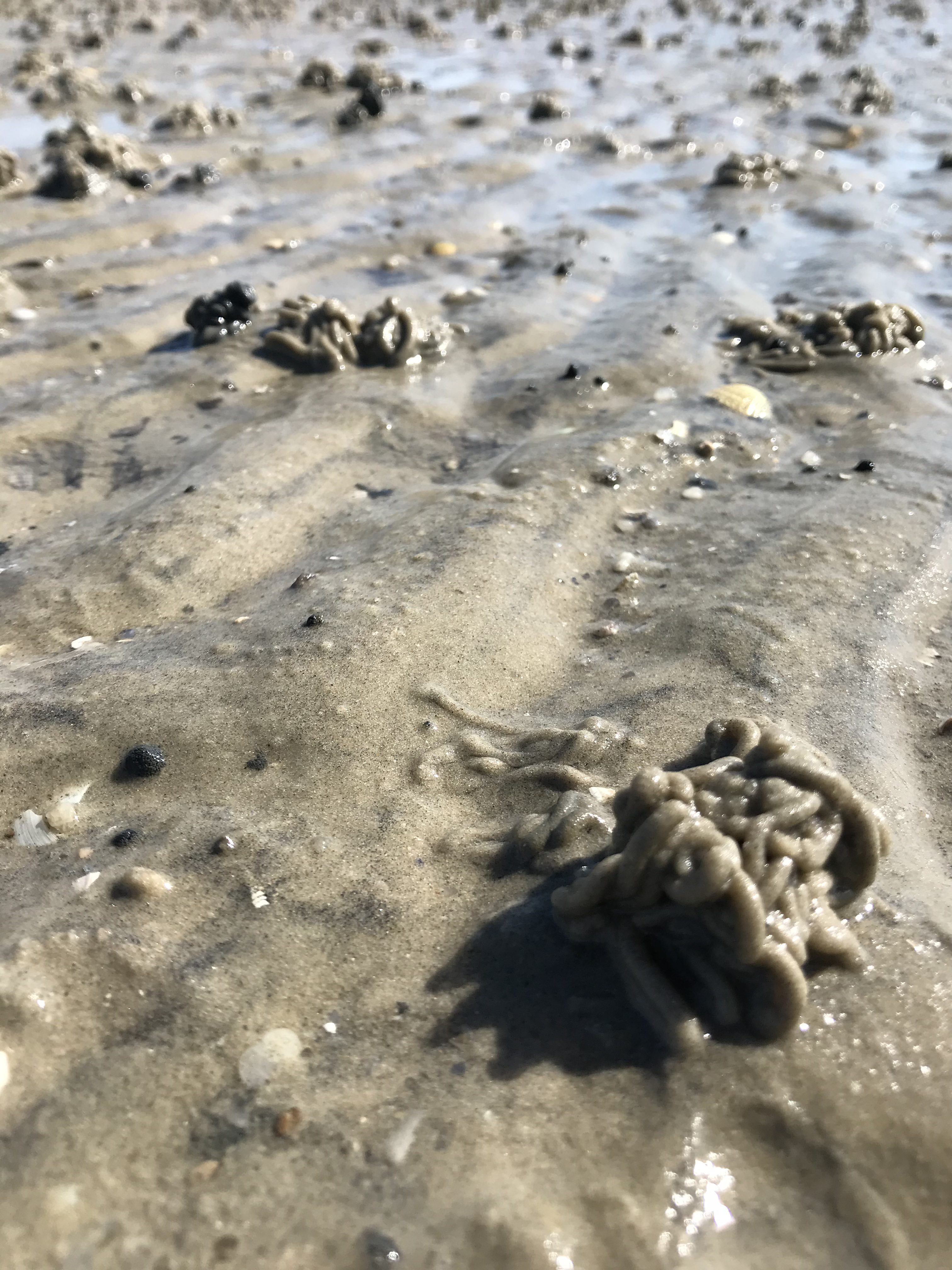
And that, for each of the piles, there is a funnel somewhere close by, and a worm connecting the two inside the mud!
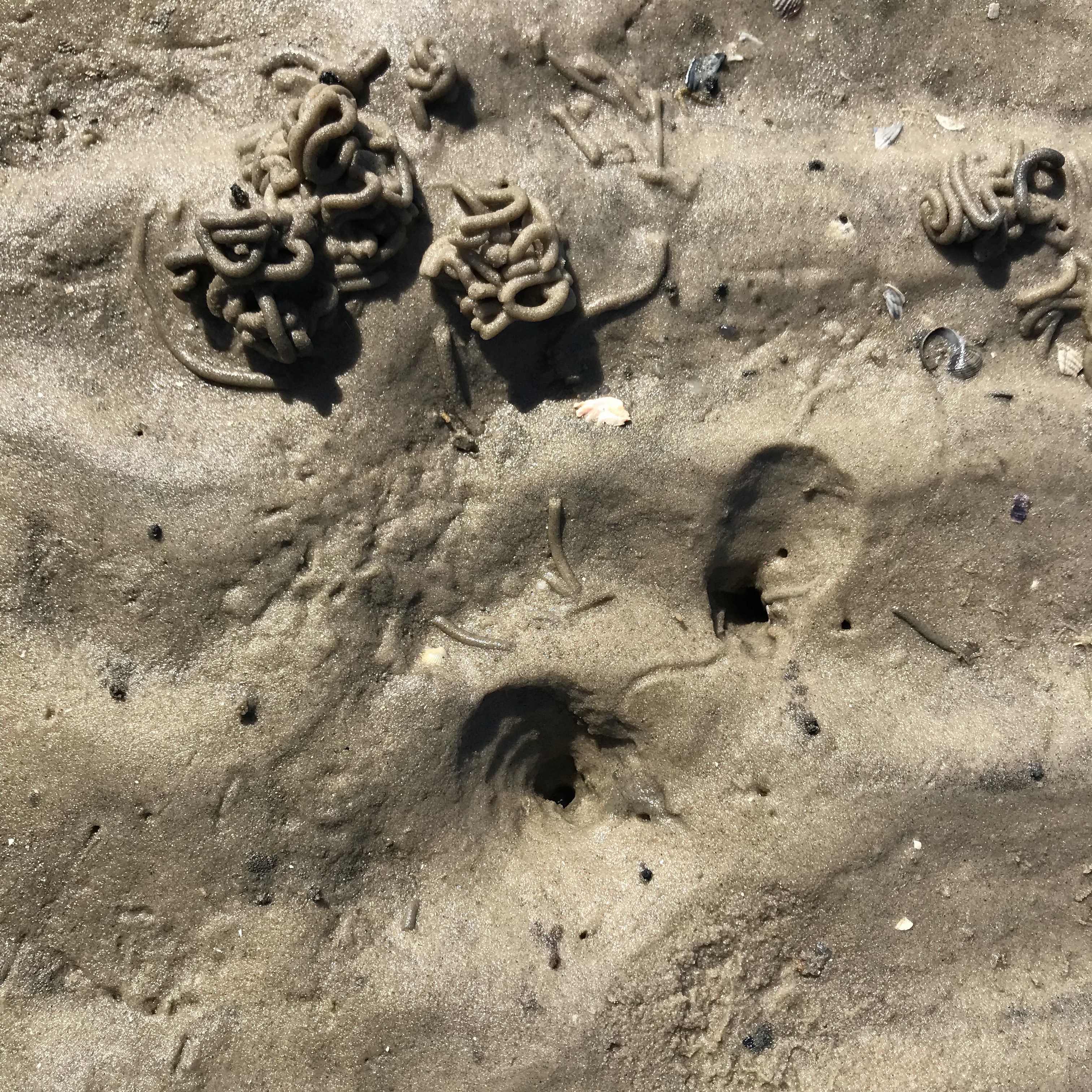
But then when the water is gone completely, it’s still pretty here, but also a liittle boring. Don’t you agree?
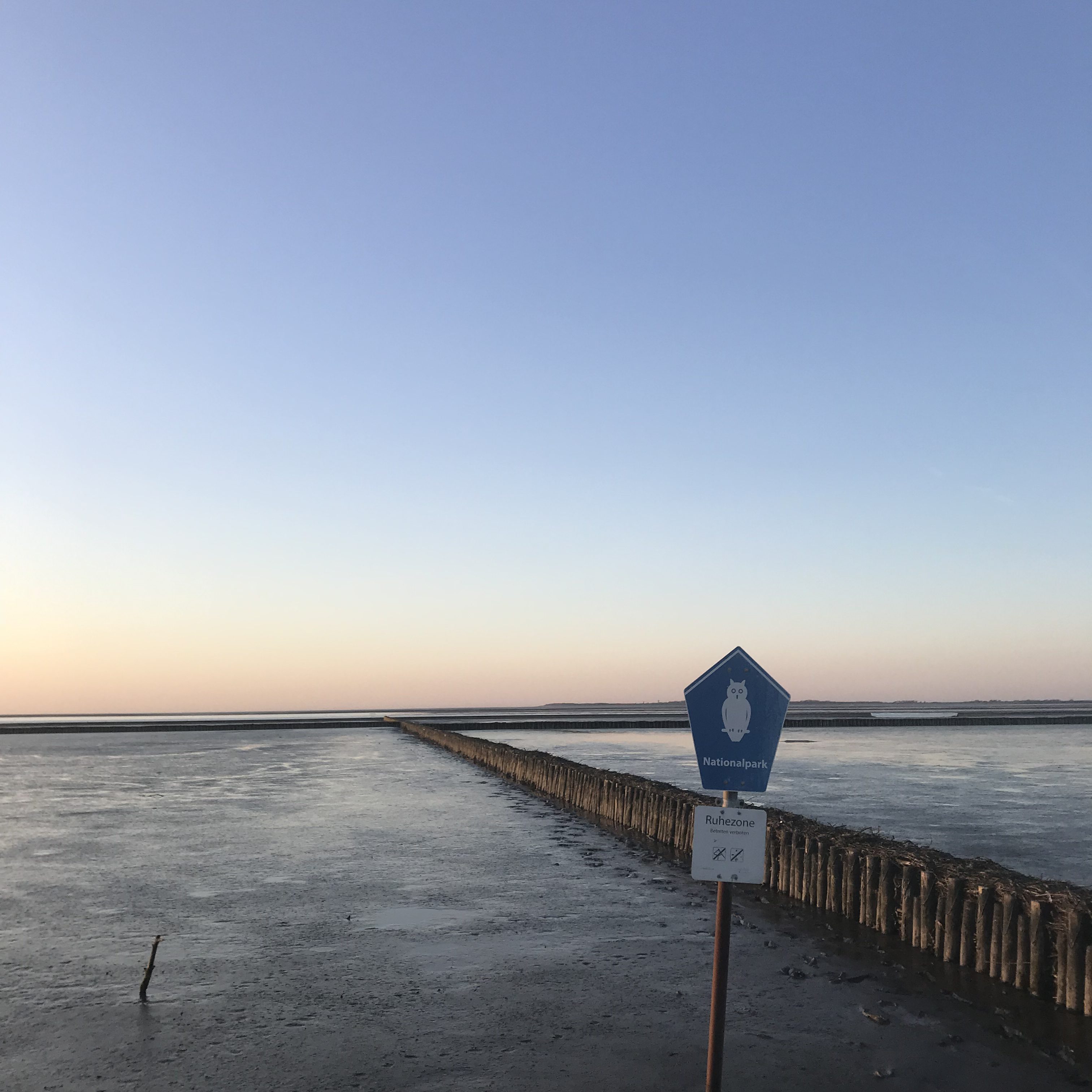
Ok, but it’s still pretty. But Wadden Sea and tides take the fun out of wave watching for quite substantial amounts of time every day, and I don’t approve of that ;-)
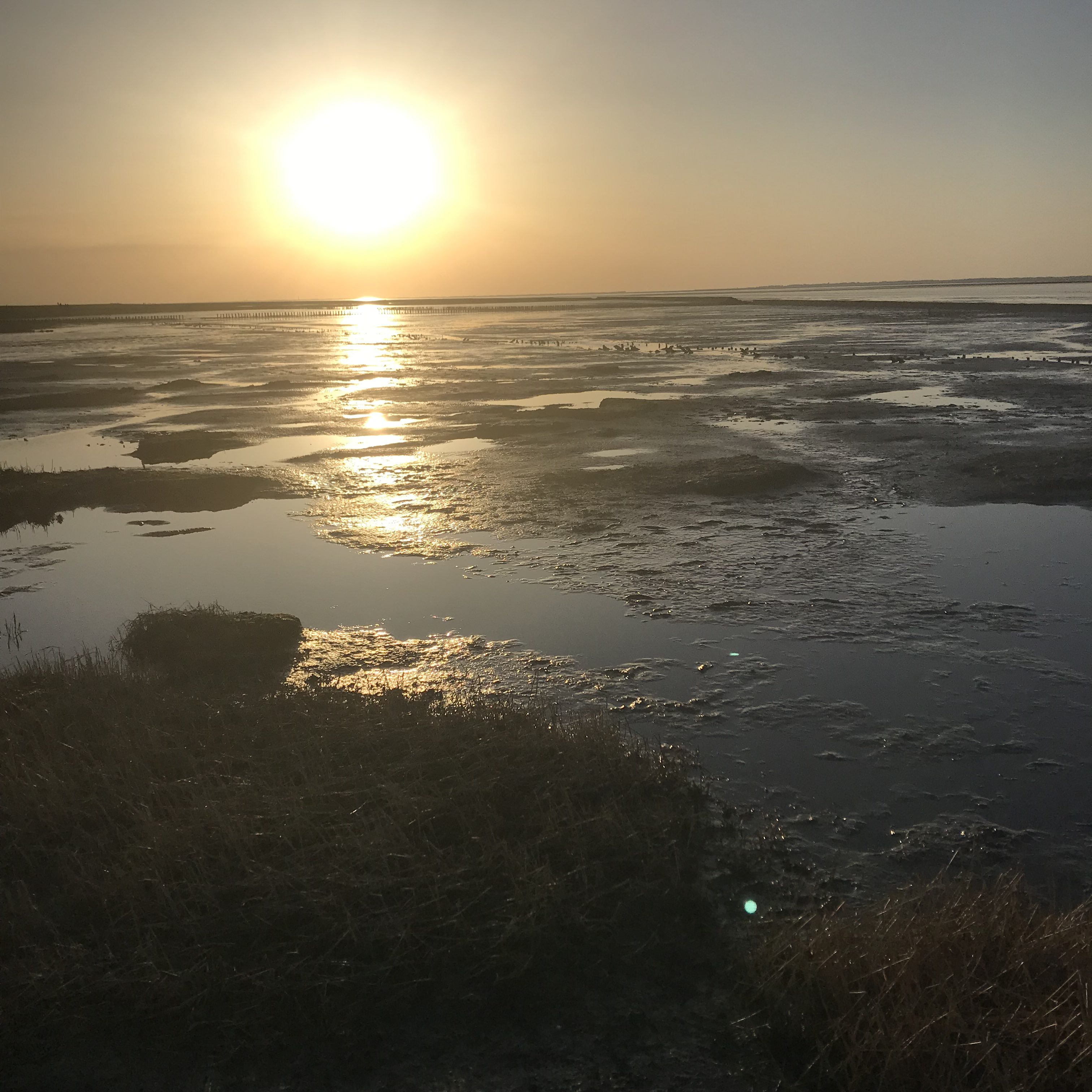
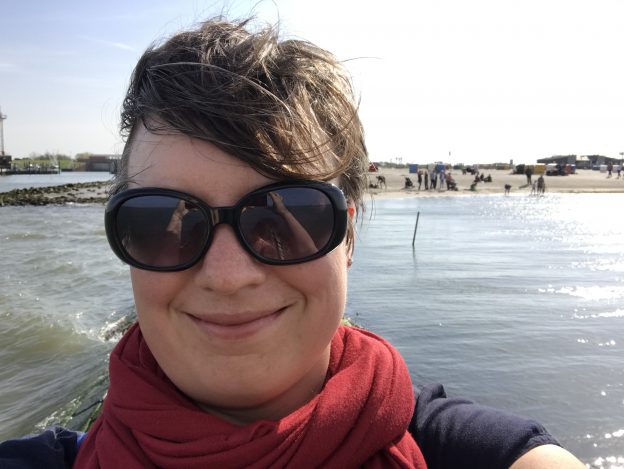
Influence of wind and water depth on a wave field (or: a beach vacation in Dornumersiel)
I took the selfie above mainly to send to my mom from my vacation in Dornumersiel on the German North Sea coast. But then when looking through the hundreds of pictures I took that day, I realized that not only was my hair parted on the wrong side because it was so windy (ha!), the wave fields to my right and left looked actually quite different, without the reason for that being immediately obvious. So let me show you a picture facing the other way.
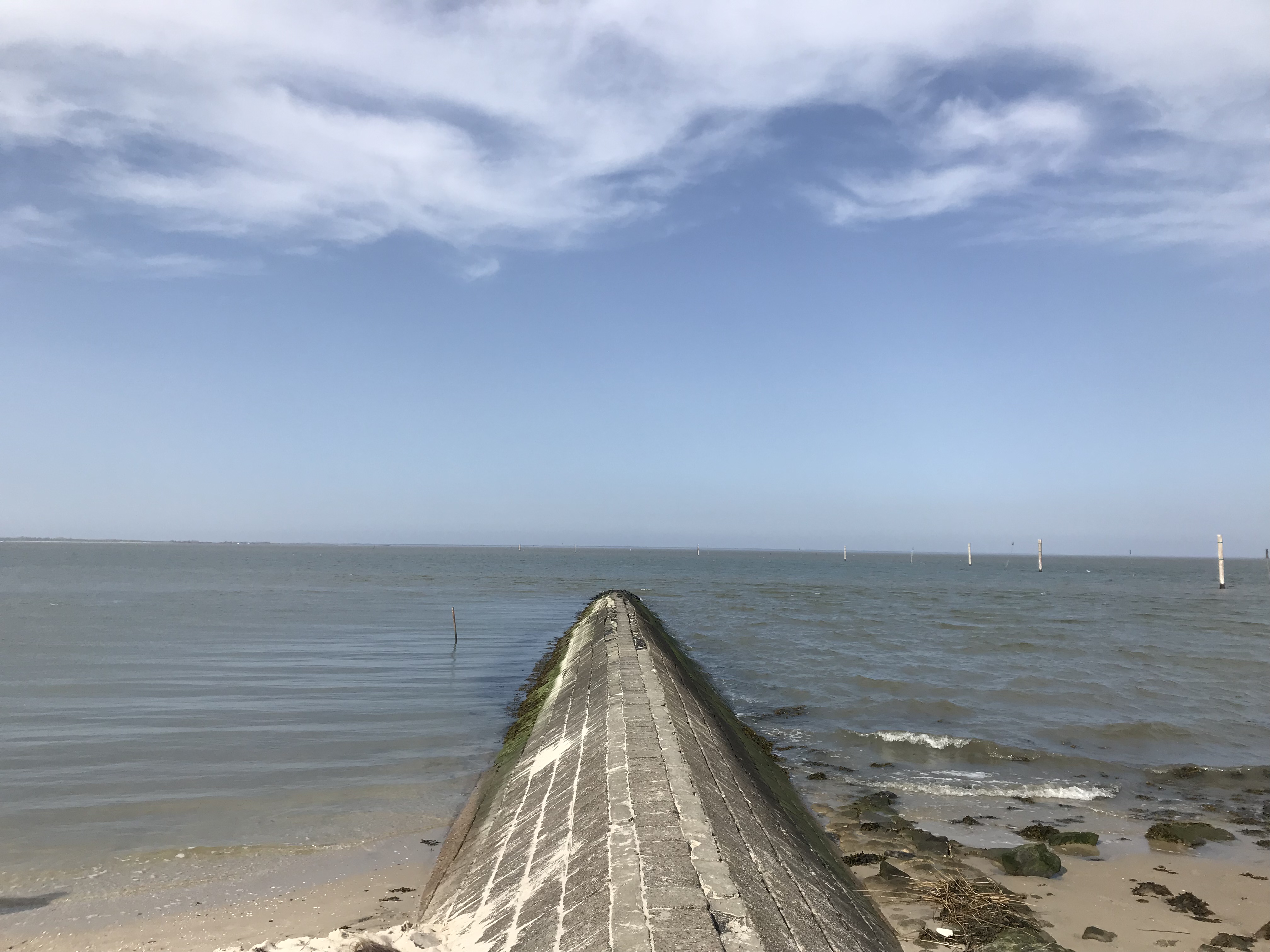
Above, you see this wave breaker like structure, protruding into the sea. The wind is coming from the right side, thus the waves are a lot larger on the right side of the breaker where they are getting more and more energy from the wind as they come towards us, than the waves on the left, the lee side of the breaker, where they don’t get any new energy input and are just refracted around the breaker.
Looking the other way, towards the shore, the difference becomes even more clear (picture below) isn’t this fascinating?
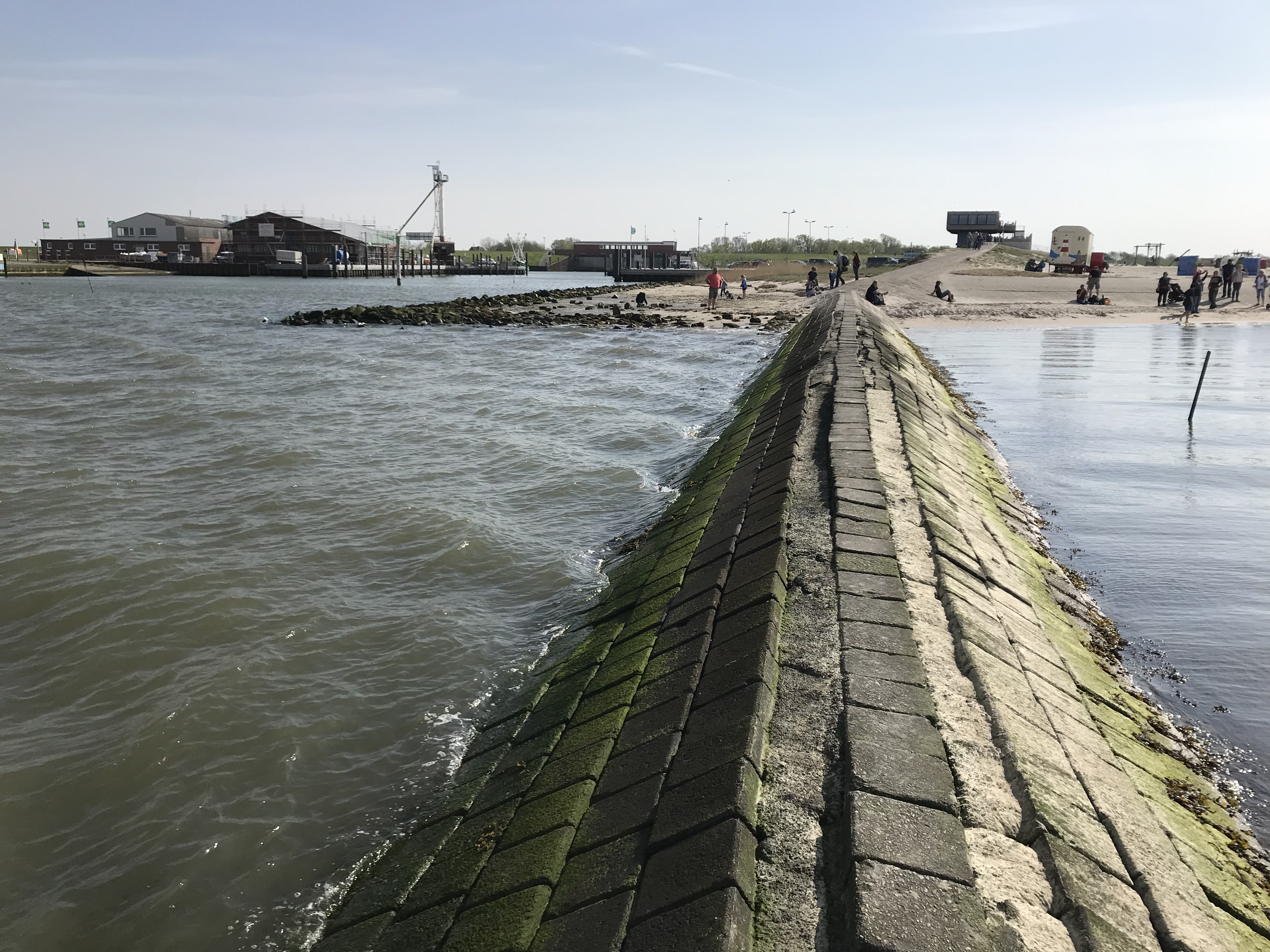
I really like watching how waves interact with structures. Below, for example, we see that the wave crests are coming towards the wave breaker at an angle, and that they are reflected and traveling away from it, too. This contributes to making this side look a lot more choppy than the other side!
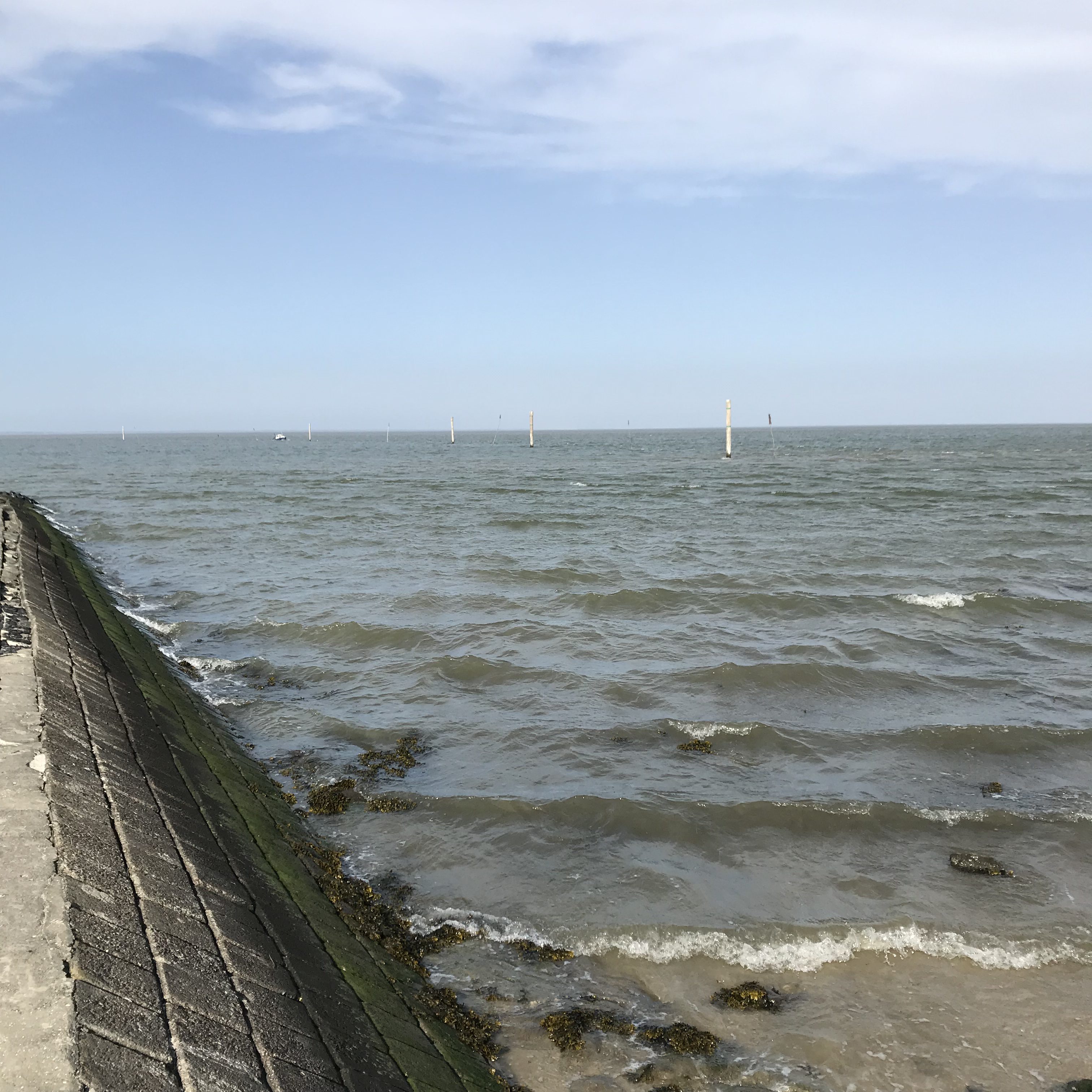
On the other side, the waves look smooth. I was still standing on the breaker when taking the picture below, and you see where the sea surface is still sheltered from the wind and where the fetch is long enough so the surface roughness increases and ripples and capillary waves form.
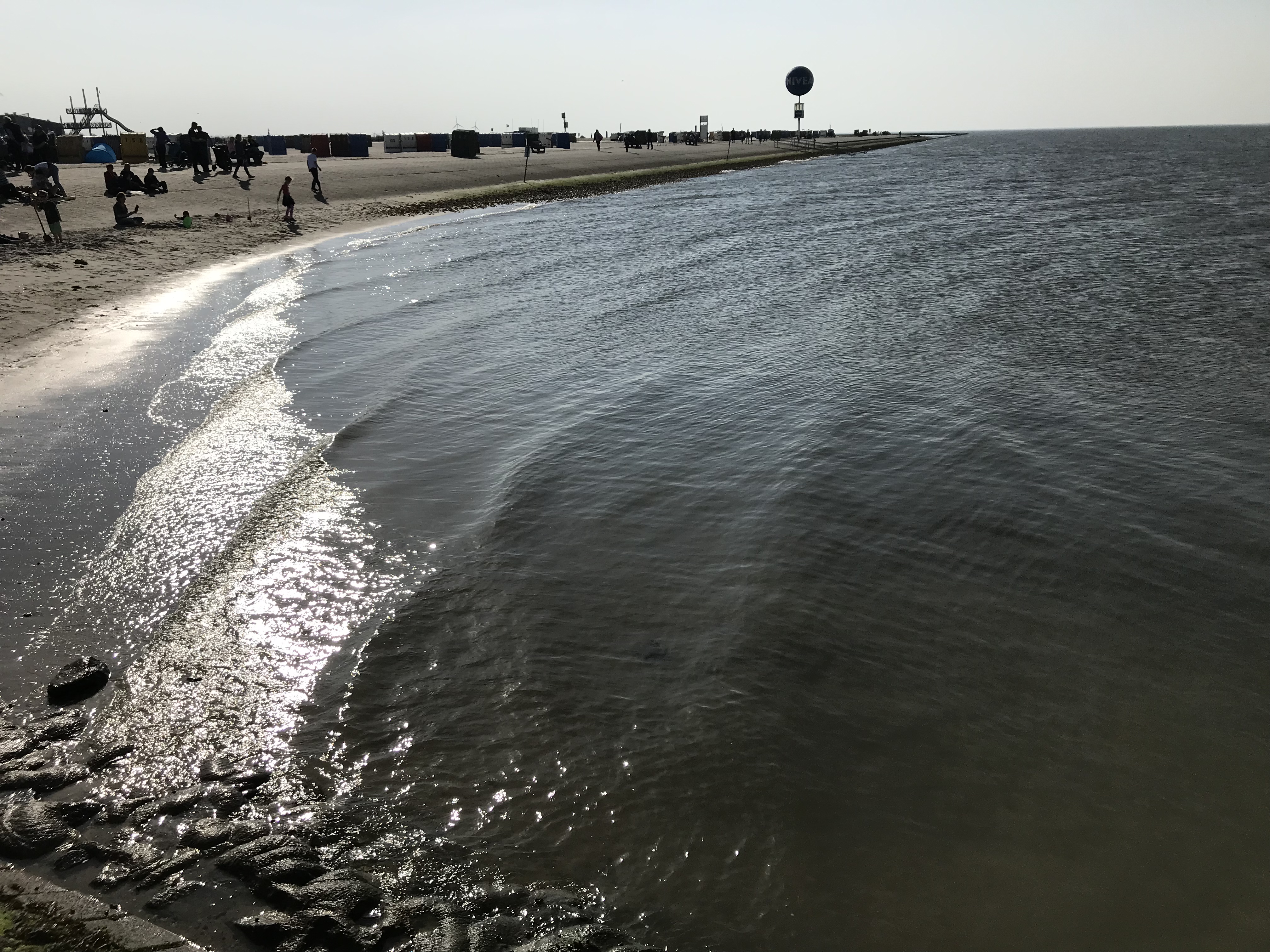
Since we are in the Wadden Sea, the shore has a very shallow slope going into the North Sea, so waves look super interesting when they are in the shallow water. Below you see many many almost-breaking wave crests behind each other, coming towards us. The water depth is clearly a lot less than a wave length, the waves are interacting with the bottom and thus have really long and uniform troughs and steep, short crests. (btw, for those of you wondering how I could say anything about water depth in my #friendlywaves post on Saturday: This is how. This is an example of waves in very shallow water, and you clearly see their shape being different, don’t you?).
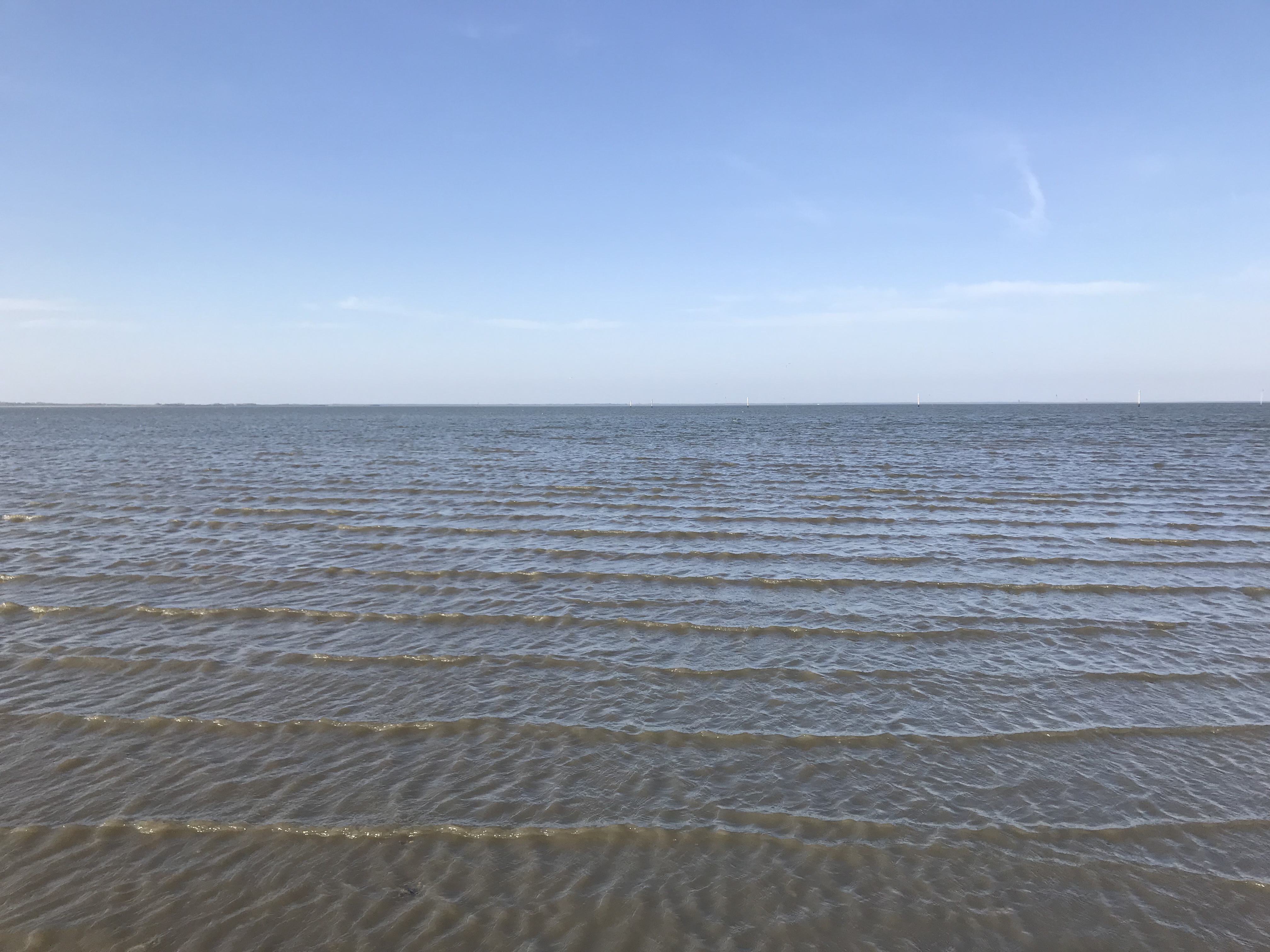
I love looking at the details of where they hit the beach! All the sparkle, all the little Mach cones around the pebbles where the water is running off, all the small capillary waves!
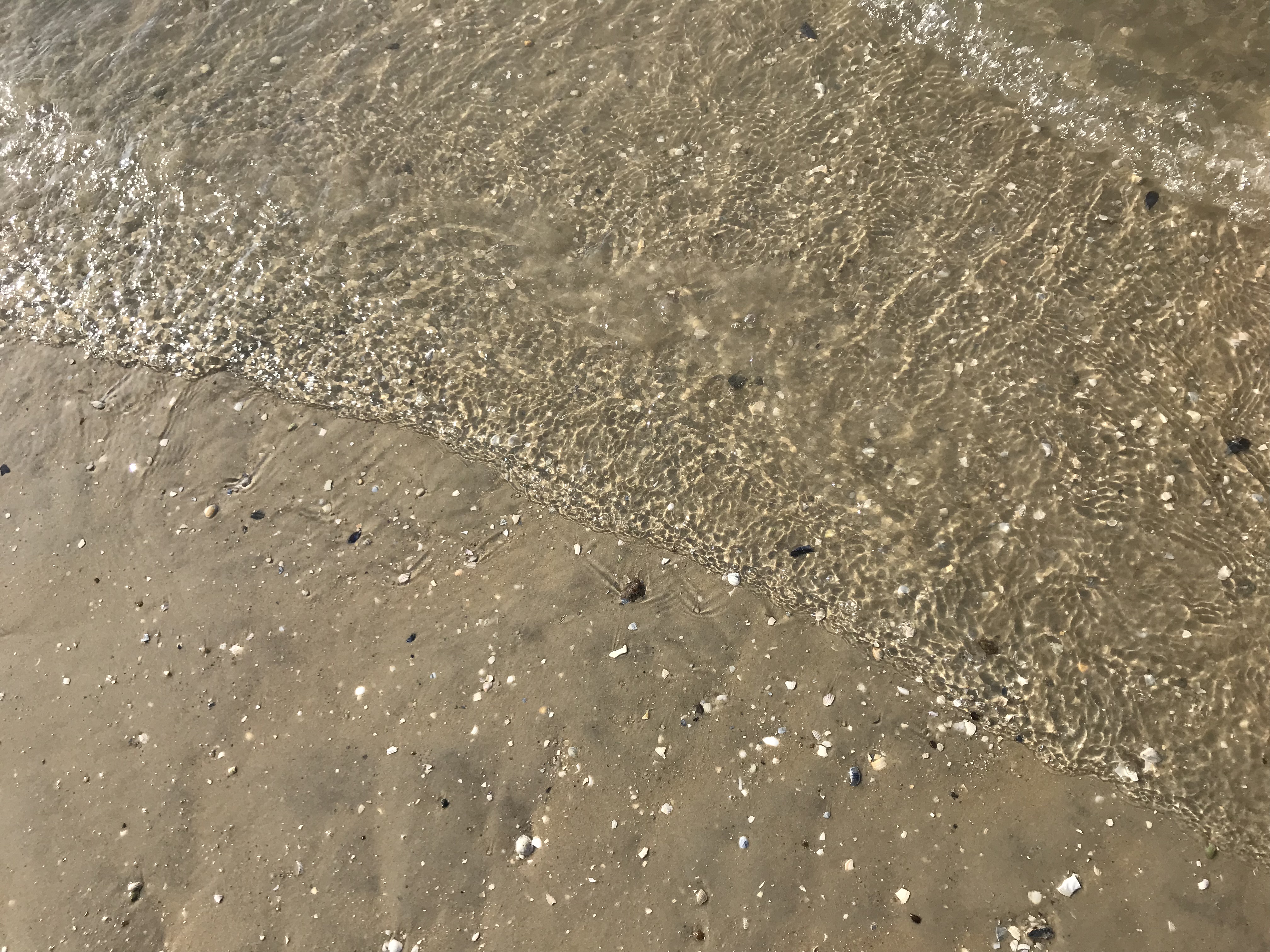
Below, someone accidentally walked into my picture, but that’s actually a good thing, because it gives you a scale, and if you look at the little wave rings that were created when she put her foot into the water and it splashing forward a little. The wave rings actually have comparable sizes to all the other small stuff going on on the sea surface!
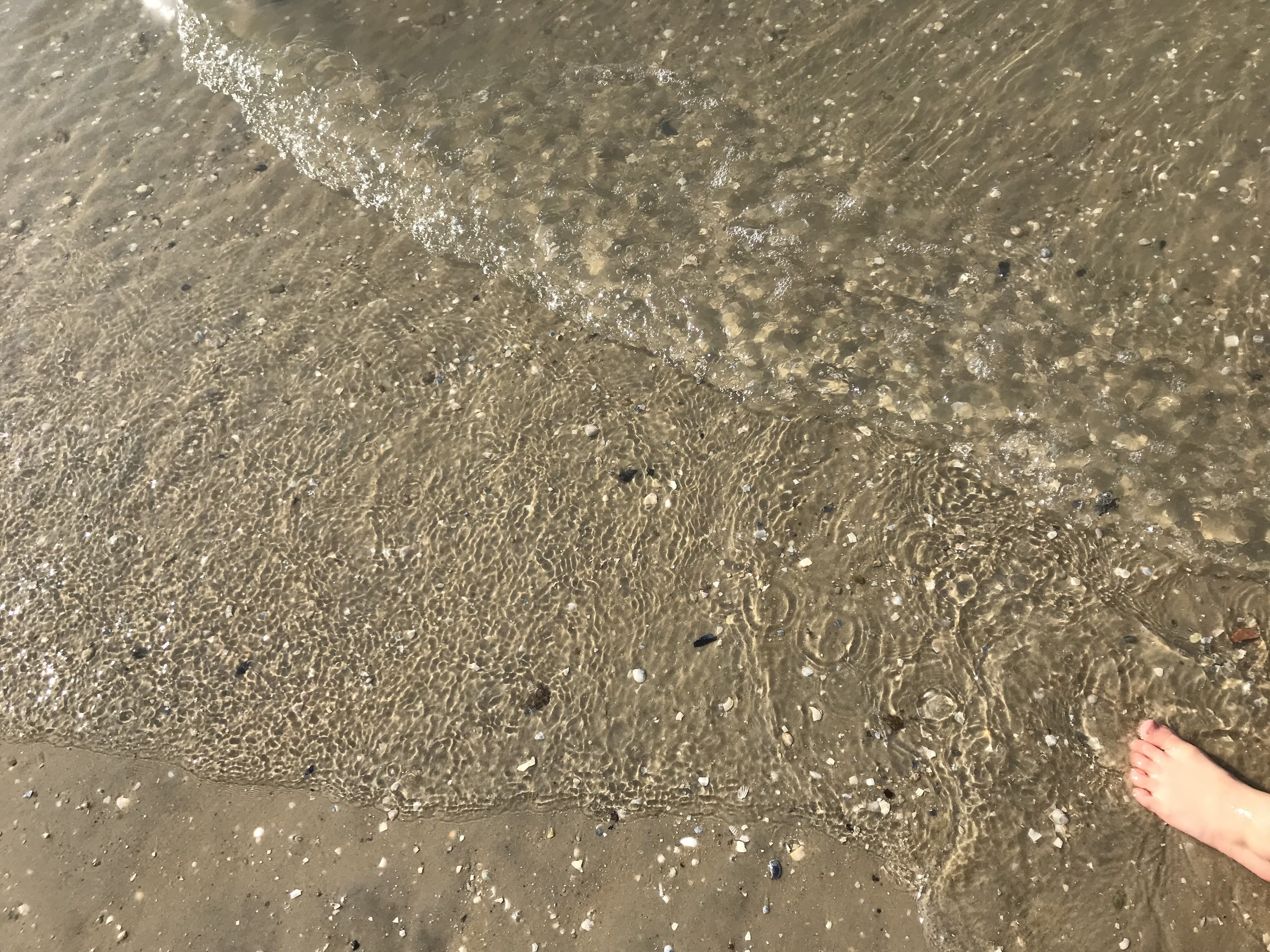
And what’s also pretty impressive: How the crests get refracted by changing water depth. Below it almost looks like parabolic shapes coming in from the right, right? The side of the parabola that is further away is actually the wave crest that is coming in from the open sea, and the rest, i.e. the actual curved part, is partly diffraction around the breaker and then refraction because of changing water depths. So cool!
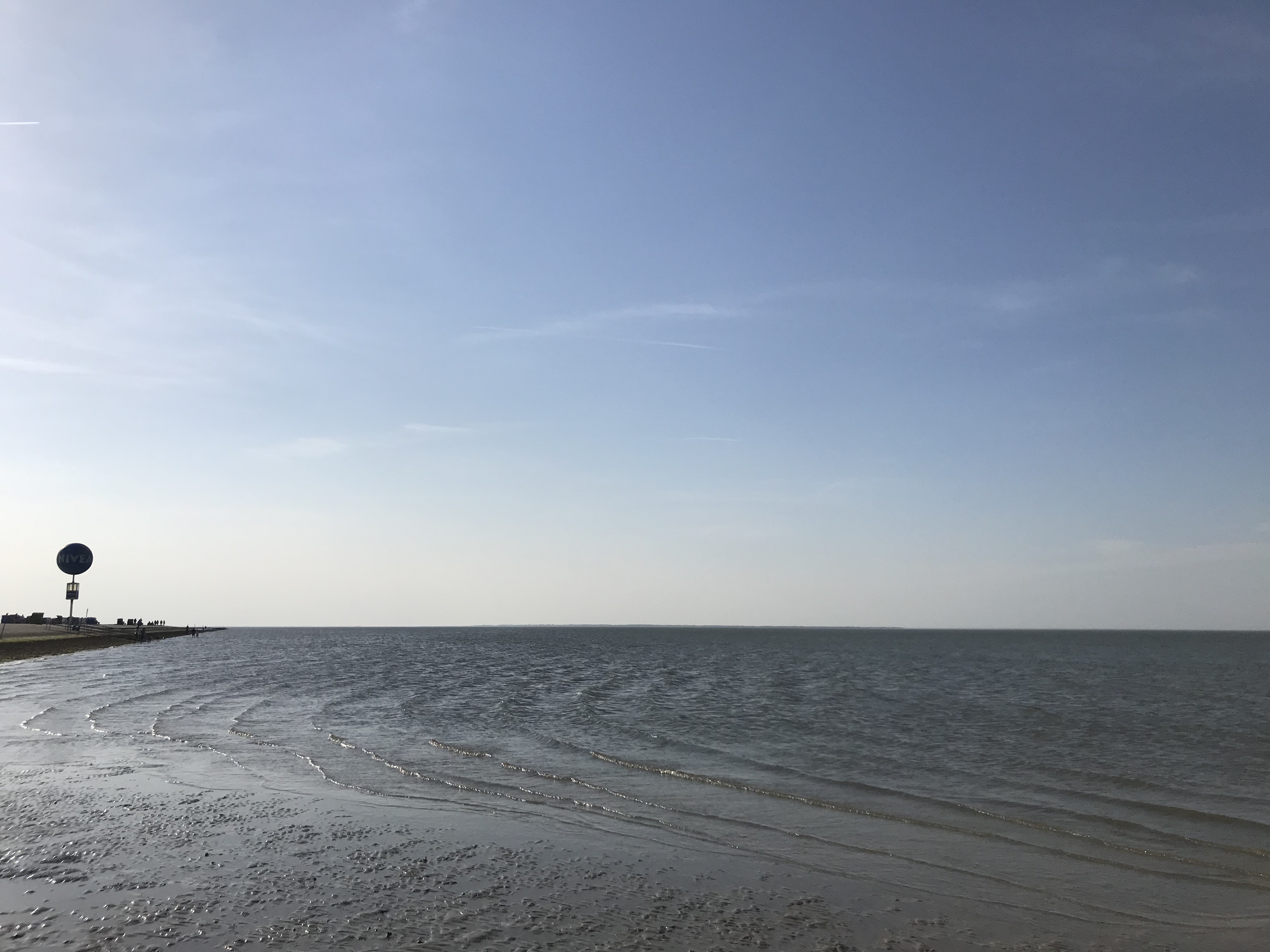
Since I spent quite some time there, here is a picture later that day with a lot less water. Tides and all that… ;-)
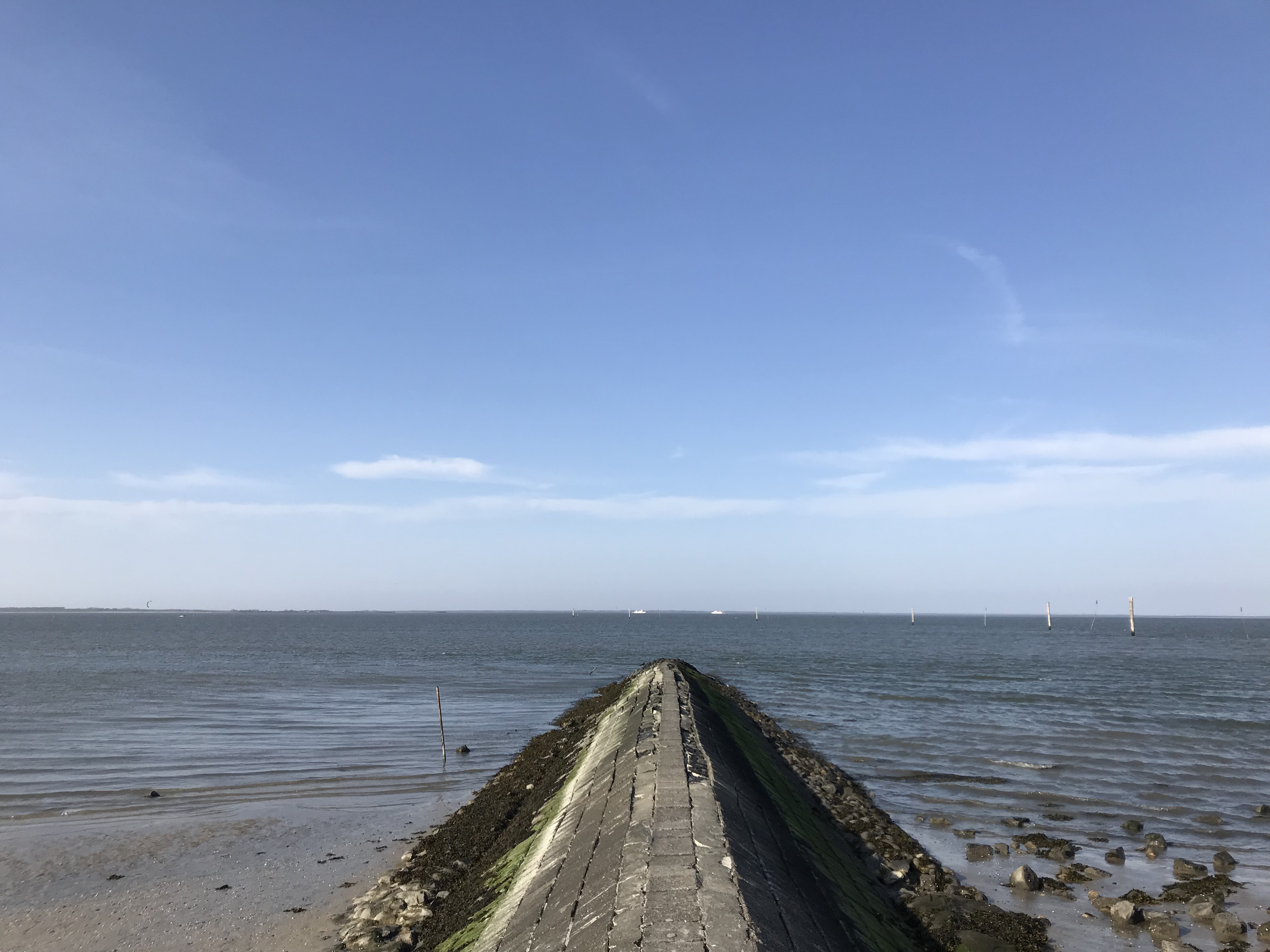
And then another day with a different wind direction and less sun.

I think it looks really cool to see the fairly wide area to the right of the breaker, in its lee, where the surface is really smooth!
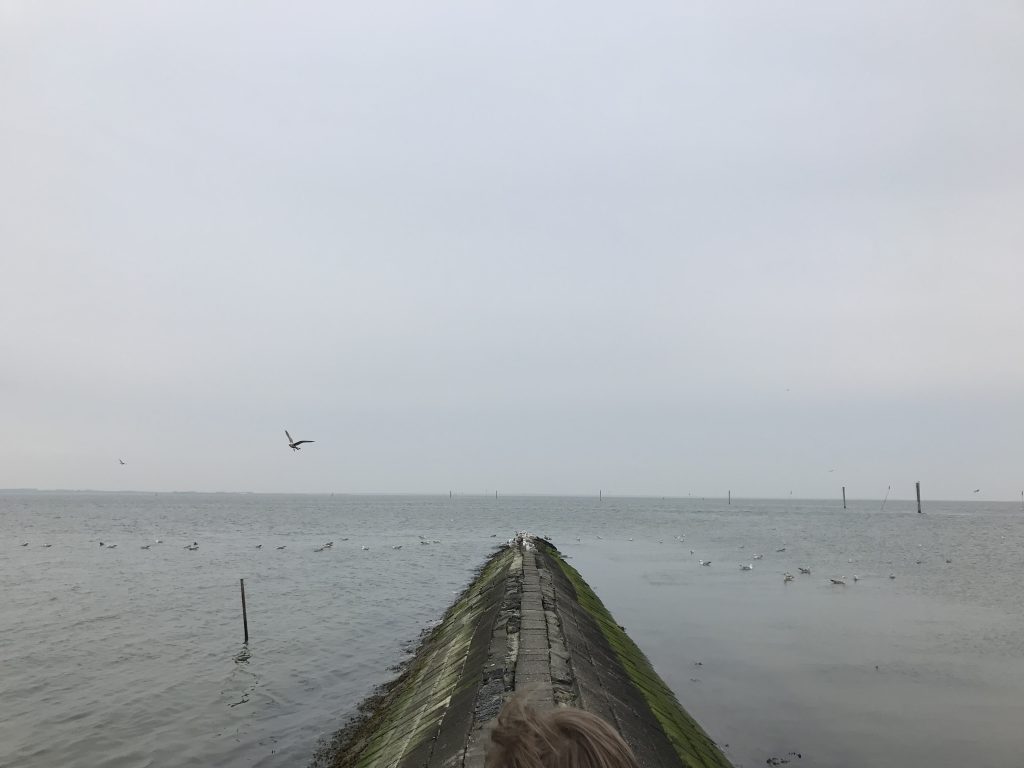 So far, so good. Gotta go now! Do you find this as fascinating as I do?
So far, so good. Gotta go now! Do you find this as fascinating as I do?
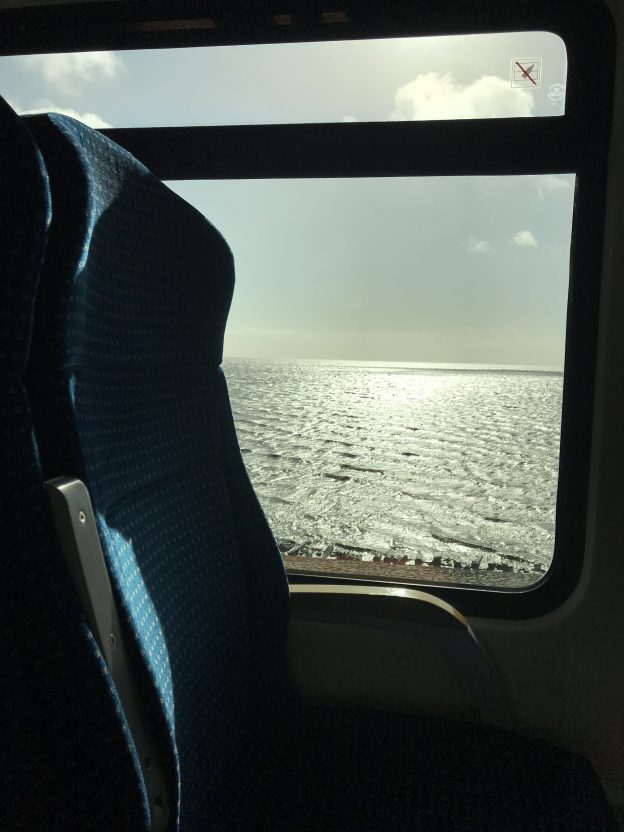
Wave watching from a train
You know how they say that the journey is the destination? That was certainly the case for my spontaneous mini-vacation yesterday (and how awesome is it that my #BestTravelBuddy is up for a cross country trip on a day’s notice?). We went all the way from the east coast to the west coast — which in Germany admittedly isn’t that terribly far — to visit the island Sylt in the North Sea for a day.
Even the train ride itself is spectacular, though, at least if you are as easily excited as we are. Wave watching from the bridge across the Kiel canal in Rendsburg (below): A super neat wake of the ship, showing the turbulent wake as well as the feathery V-shaped wake. And as you can see from the rows of foam on the water that are a sign of Langmuir circulation (more about that here): It was pretty windy, too!
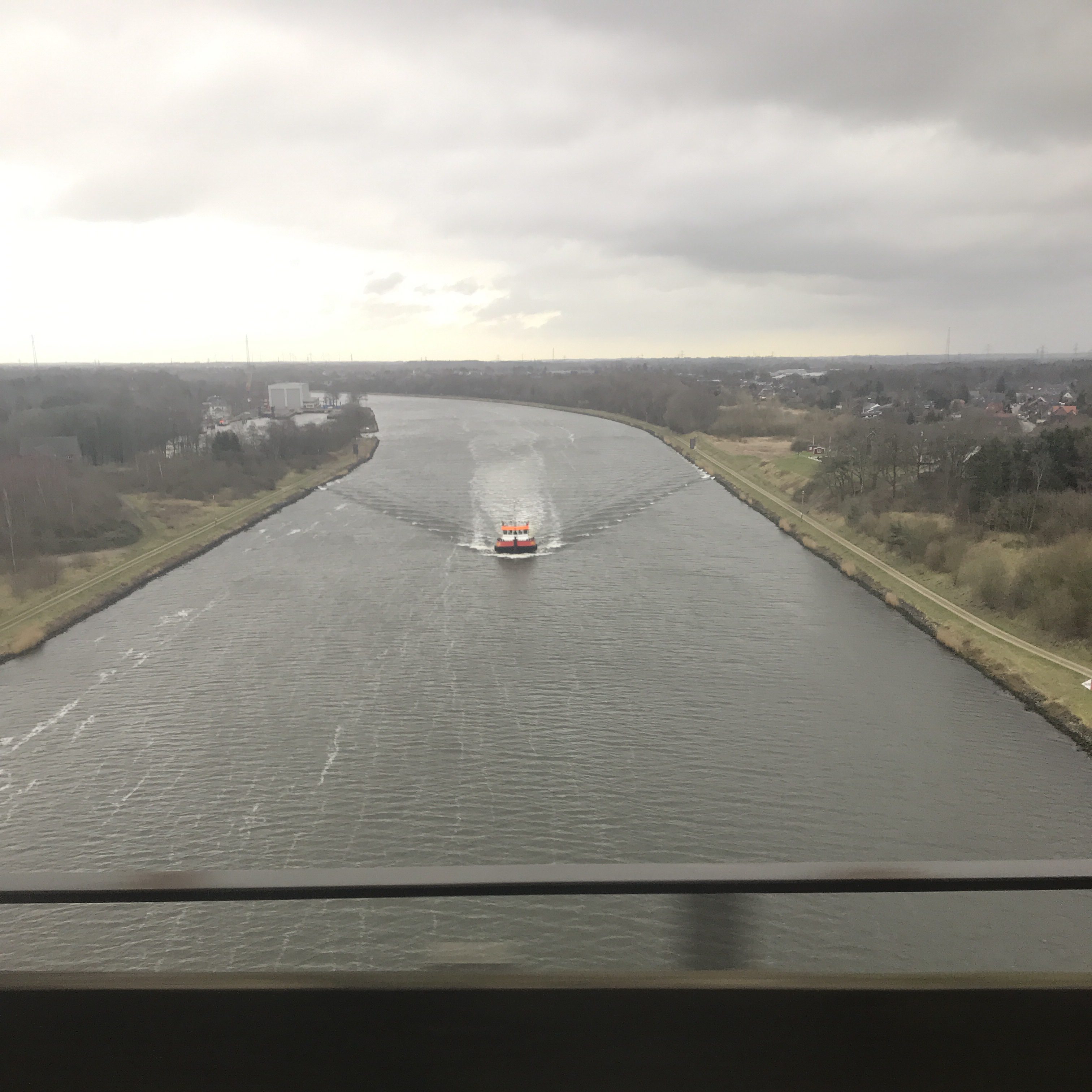
But it got even better when we reached the west coast. This is my kind of train ride!
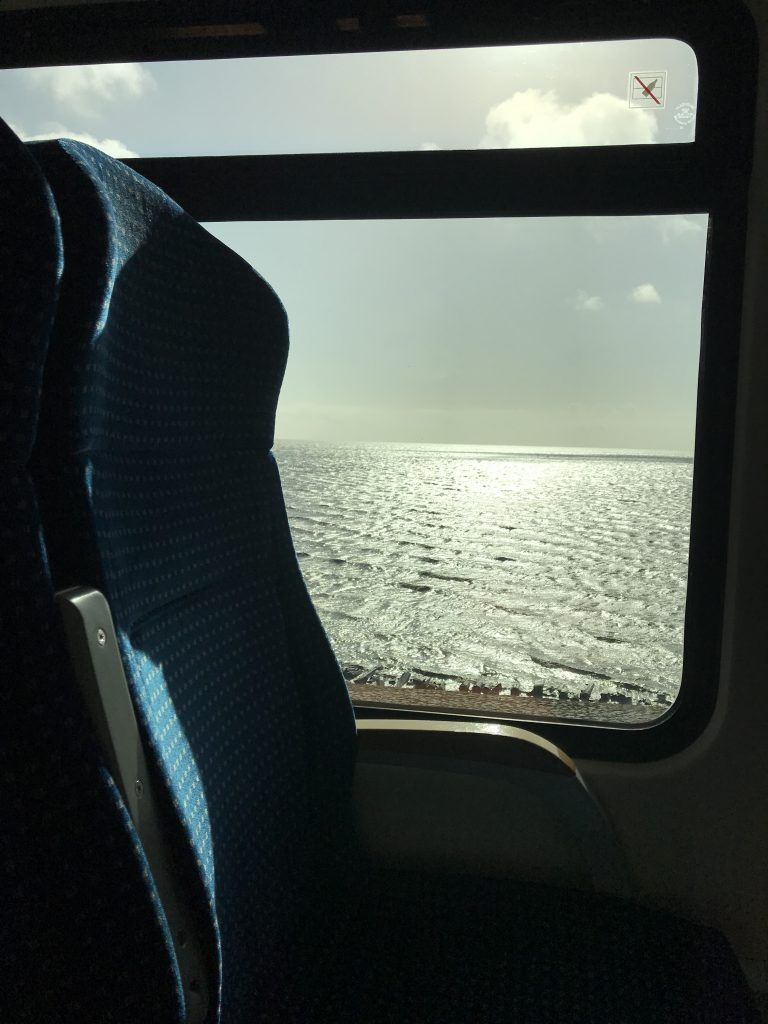
Below is a view of the dam that connects the island Sylt with the main land, and here again you see how windy it is, and this is in the lee of the island. In the lee of those shallow dams you see that it really doesn’t take long for the surface roughness to increase again.
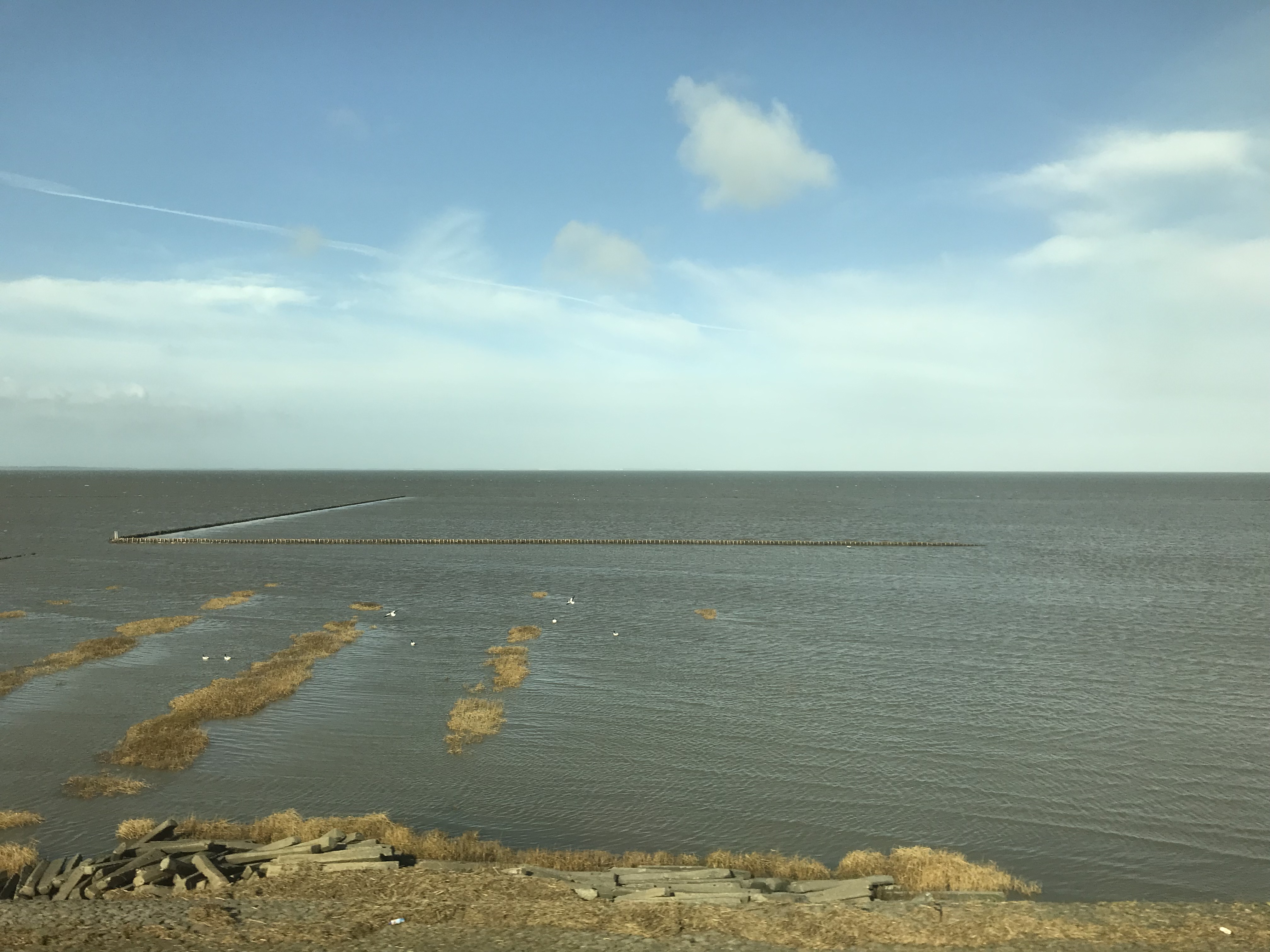
So are you excited to see the wind-ward side of the island now? I’ll post some wave watching from that side soon, but I first have to wade through literally thousands of pictures to cut it down to a handful. I’m already down to about the 100 best, but now I can’t decide which ones to post, because I like them all…
But here is a picture of the train ride back. Do you notice how there are regions with really low surface roughness on either side of the dam, suggesting that this dam is sheltering the water surface from the wind in two directions? Of course it isn’t — it’s just ebb tide and the smooth surface areas towards the right of the dam are wet sand that look similar to a smooth water surface.

So that’s my wave watching from the train! Excited to go back soon! :-)
Wave watching: A wake, another wake, and a mystery wave
And we are wave watching again!
A ship’s wake and the different zones within
Here is the wake of the little ferry that goes across Kiel canal.
I love how you can see the different parts that a wake consists of: The V with the ship at its tip that consists of wavelets from the bow wave and that spreads outwards. And then the turbulent wake where the ship has physically displaced the water when sailing through, and that then has been thoroughly mixed by the ship’s propellers.
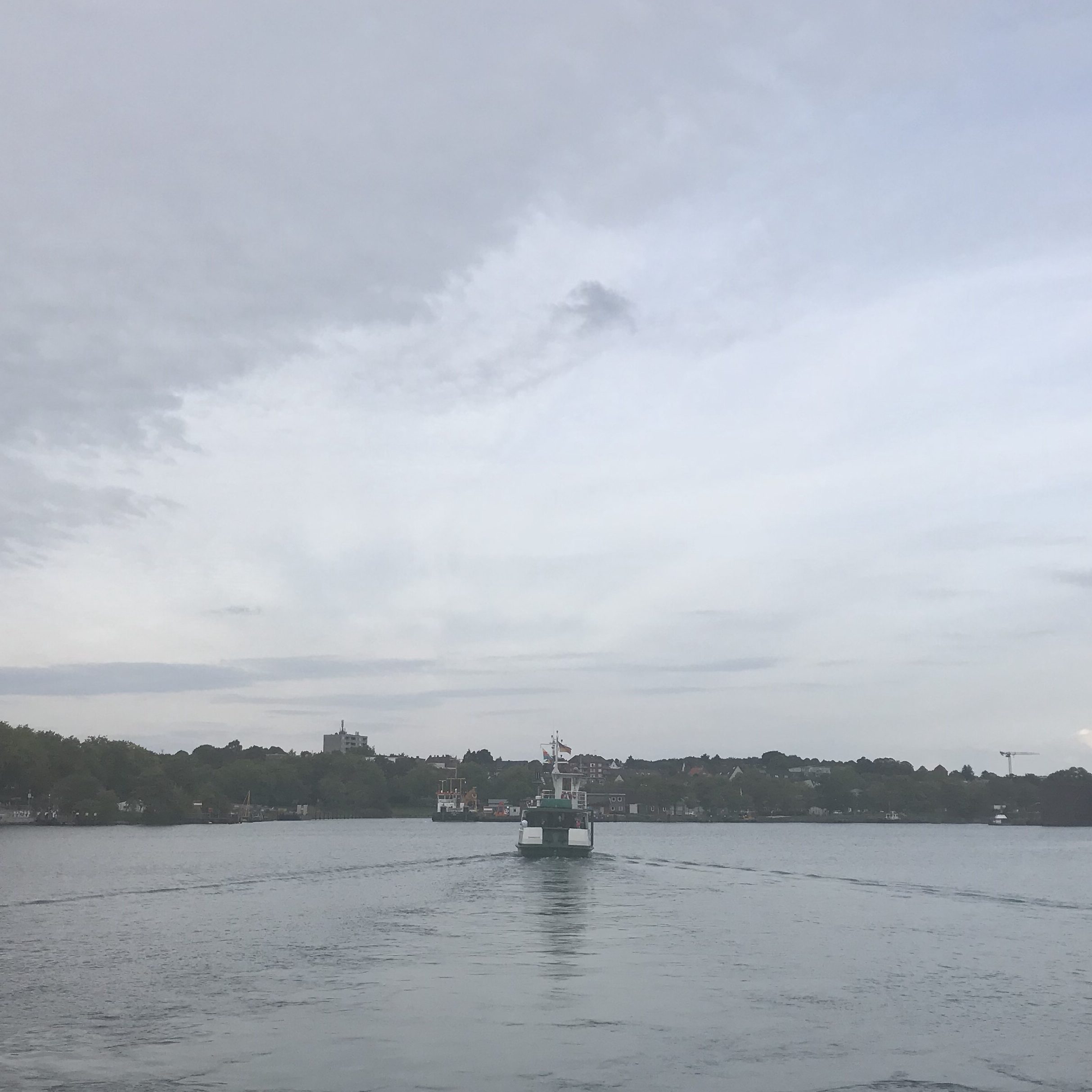
This second, turbulent wake actually changes the water’s surface for quite some time. Propellers put the water in rotation and it slowly entrains surrounding waters, and this turbulent motion looks substantially different from the “normal” sea surface. It can even be spotted from satellites long after the ships are gone. You’ve probably sometimes noticed streaks on the sea even though no ships were present — those might well have been the remains of wakes!
But speaking of ships that have sailed…
Wake of a ship that sailed past a while ago
Here is another example of a wake being visible quite some time after the ship has sailed past. However what we see here is the feather-y train of wavelets from the V reaching the shore.
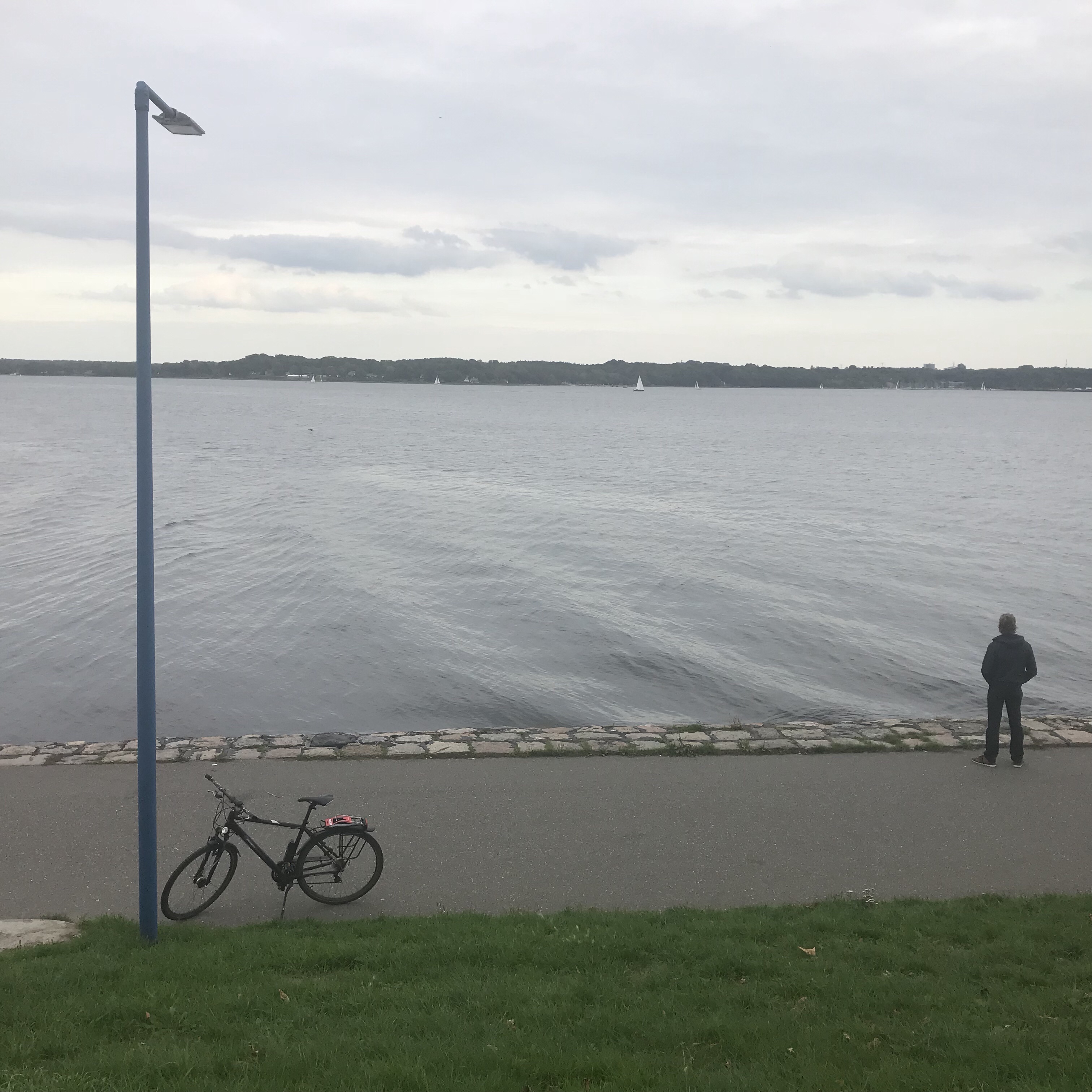
While we were looking at it, my friend mentioned that the waves seemed to approach a lot more slowly than she had expected. That’s because the movement we first notice is the phase velocity of individual wave crests. But when you look closely, you can’t follow one individual wave crest for a very long time, it always appears and you have to start over. That’s because the signal, the V itself, only moves with the group velocity, which moves at half the velocity of the wave crests. That really looks confusing! Unfortunately I didn’t get a good movie of this. But there is always next wave watching session! :-)
And a mystery wave!
But then what would any wave watching session be without a riddle.
Any idea what caused the wave pattern below? Not the obvious, larger waves, but the concentric circle segments that radiate outwards from somewhere in the bottom right?

This is a case where it is really helpful when you recognize where the picture was taken, because there is some important information missing from the picture: The straight edge continues on for a little to the right, and then it opens up to a fairly long channel coming in.
However what you do see is the wind direction from the way the water is smooth right at the shoreline and then ripples start to form as you look further away: The wind is blowing out onto the water.
Now combine those two informations and you understand how that wave pattern was generated!
Diffraction at a “slit”
Wind-generated waves move as (more or less) straight crests out of the channel that opens into Kiel fjord just outside the right edge of the picture above. Then, suddenly, they aren’t bound at the sides any more, and what happens looks like diffraction at a slit (except the slit is fairly wide in this case): The straight crests turn and form 90 degree circle segments that radiate outwards. Voila!
